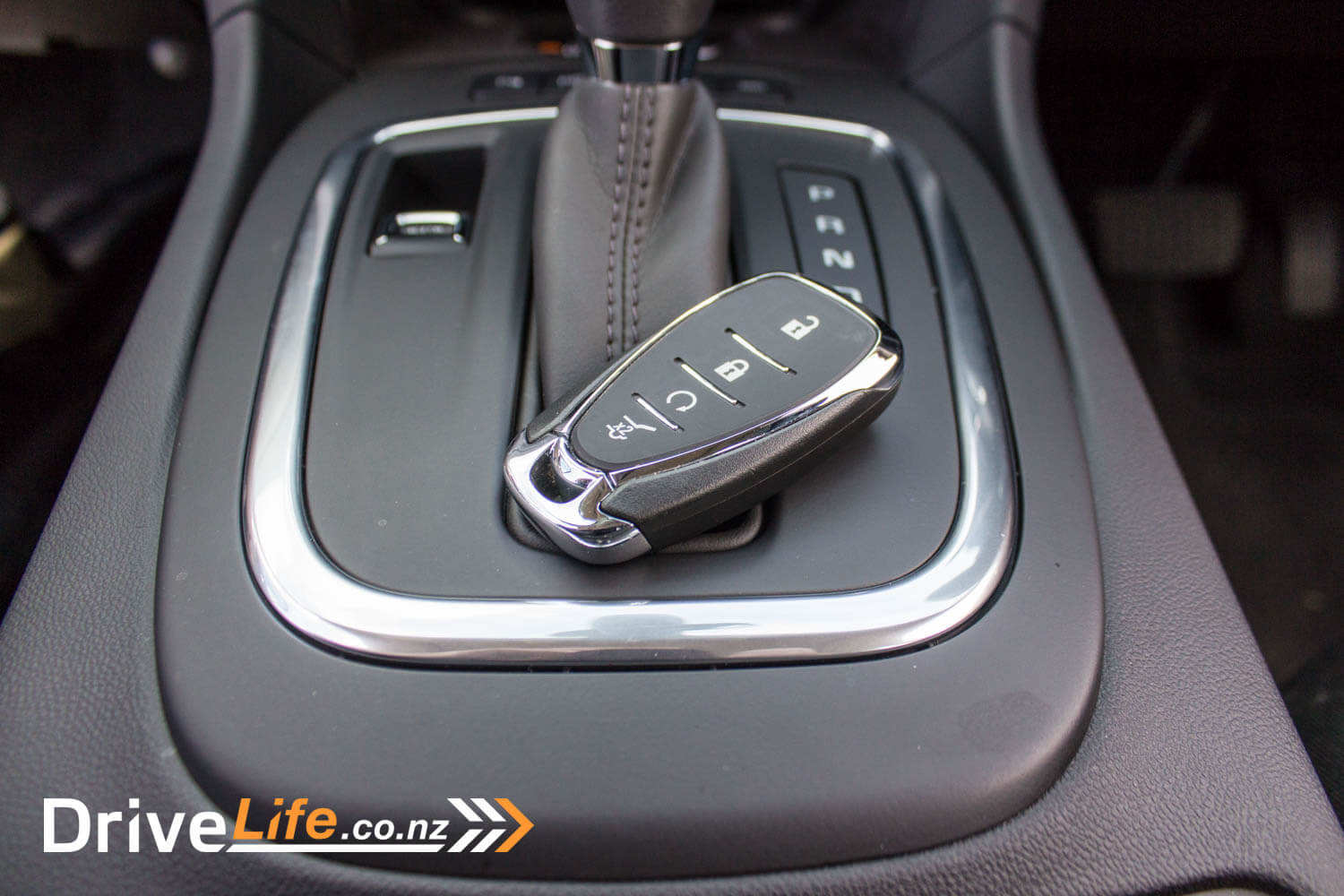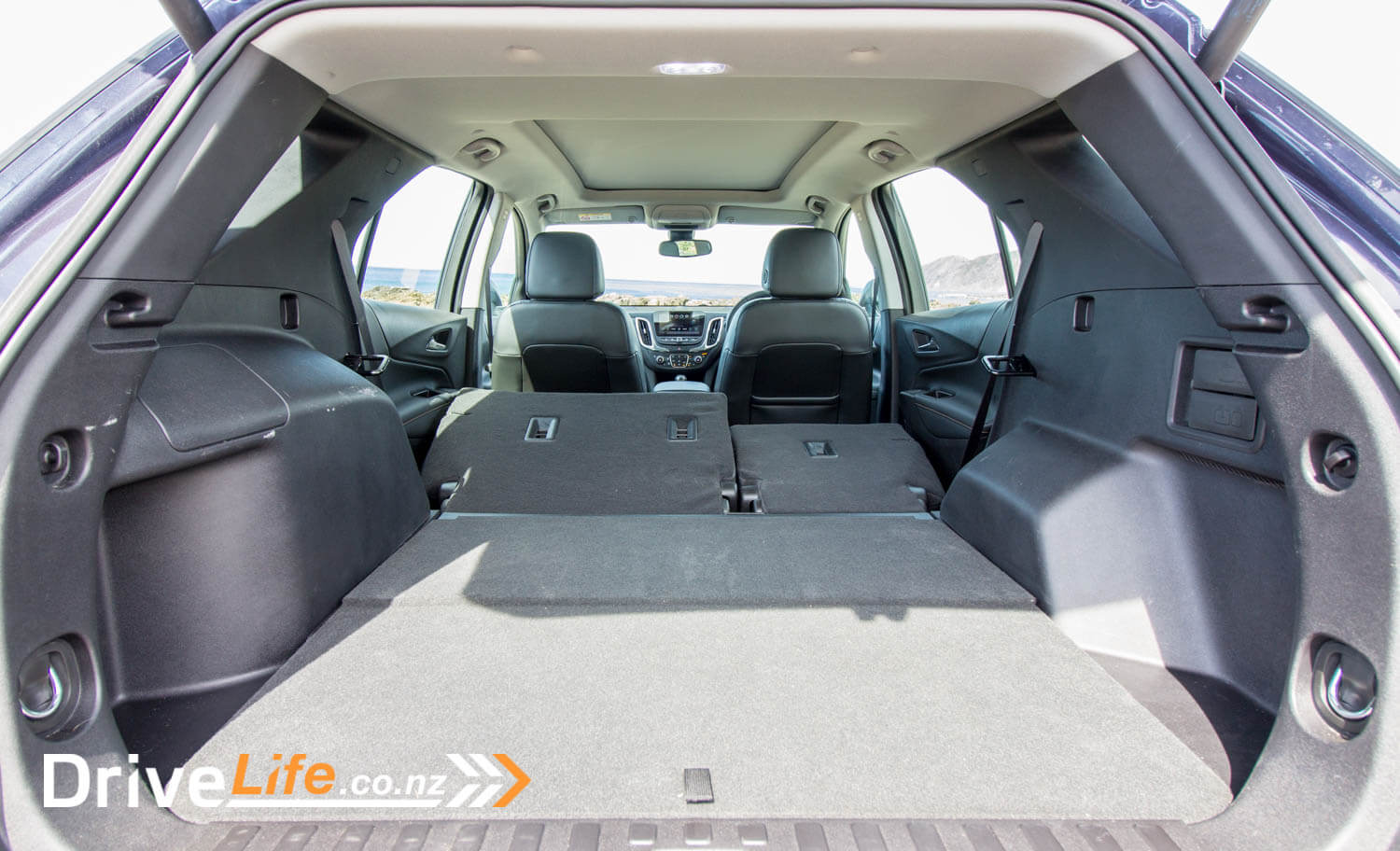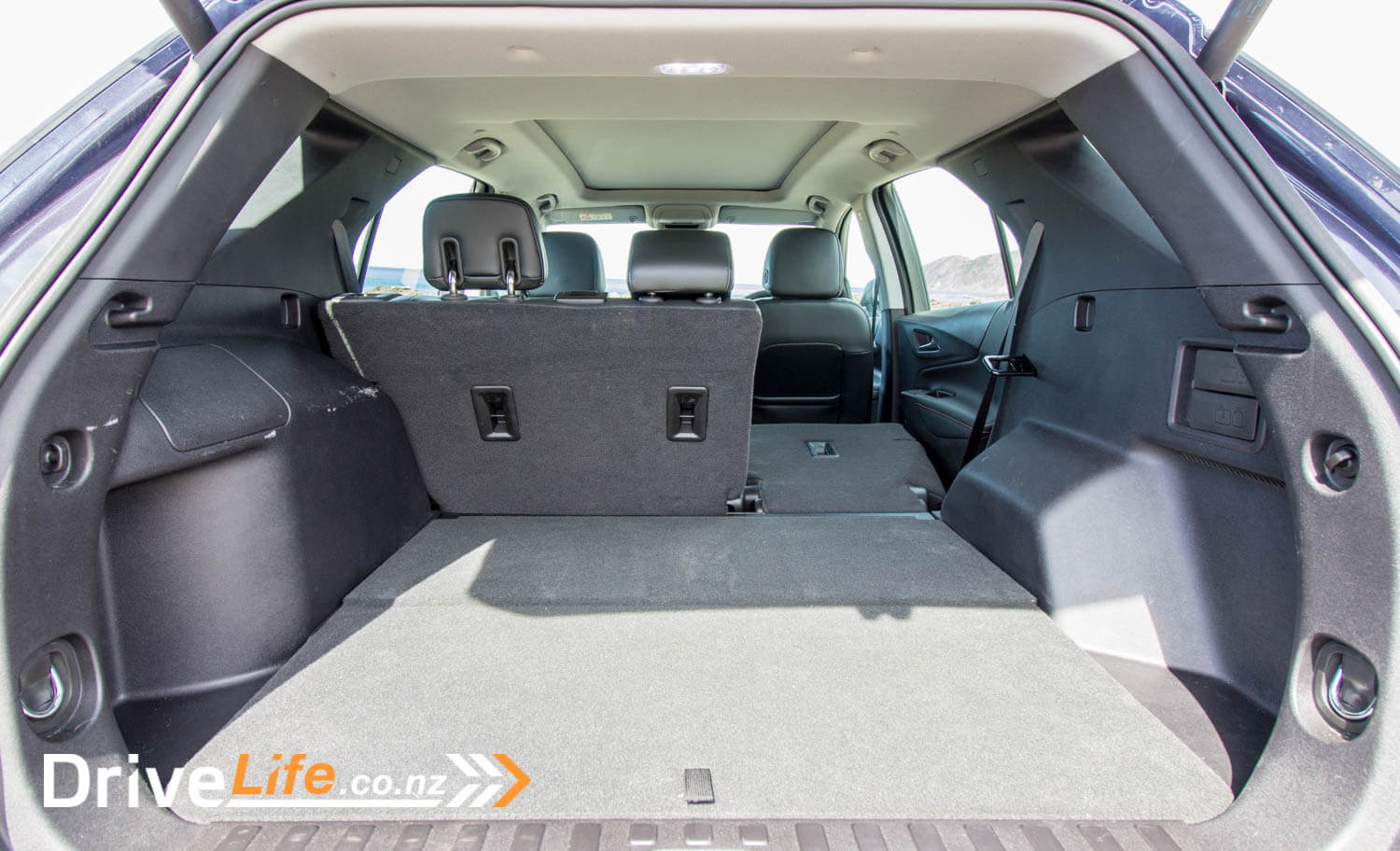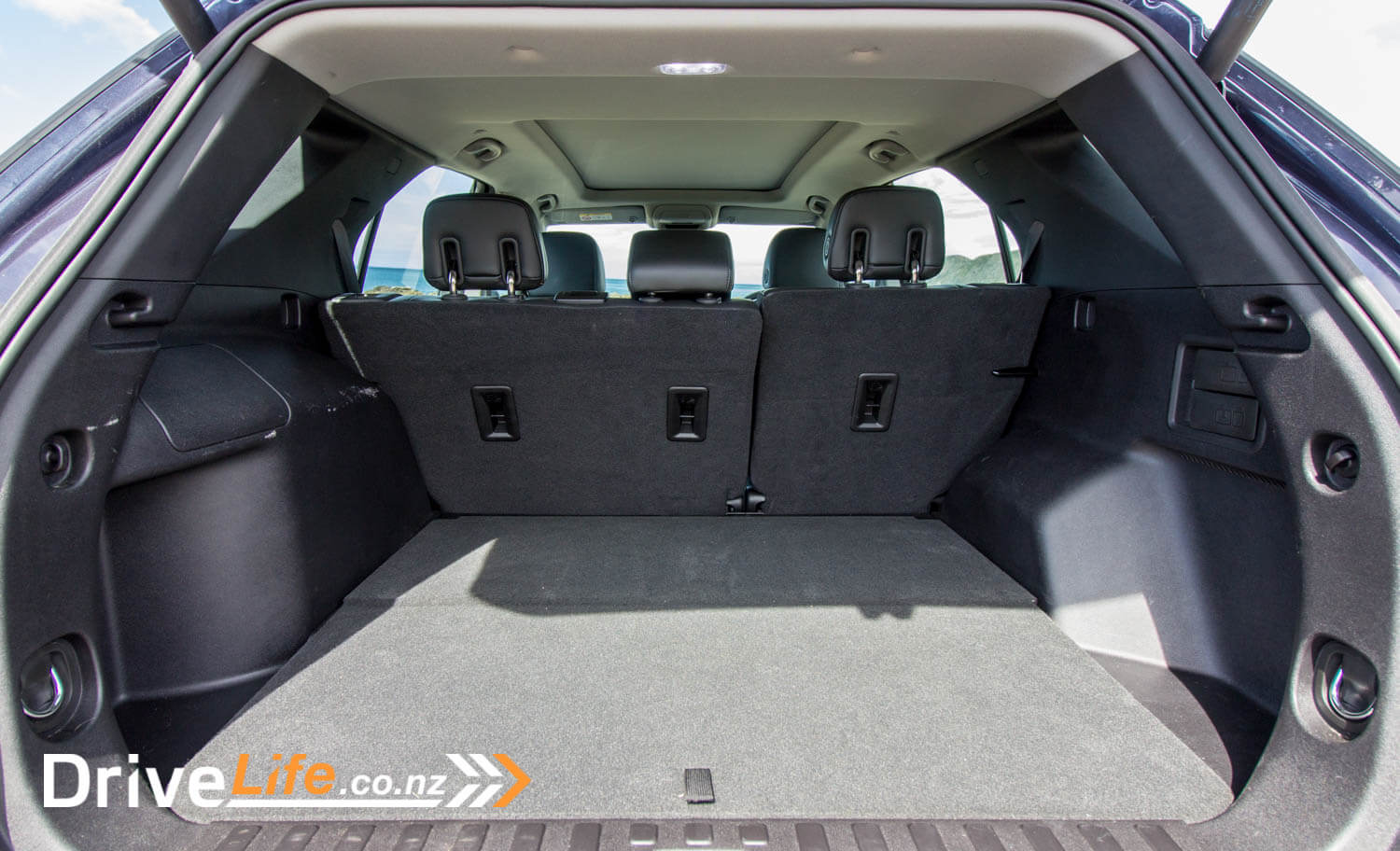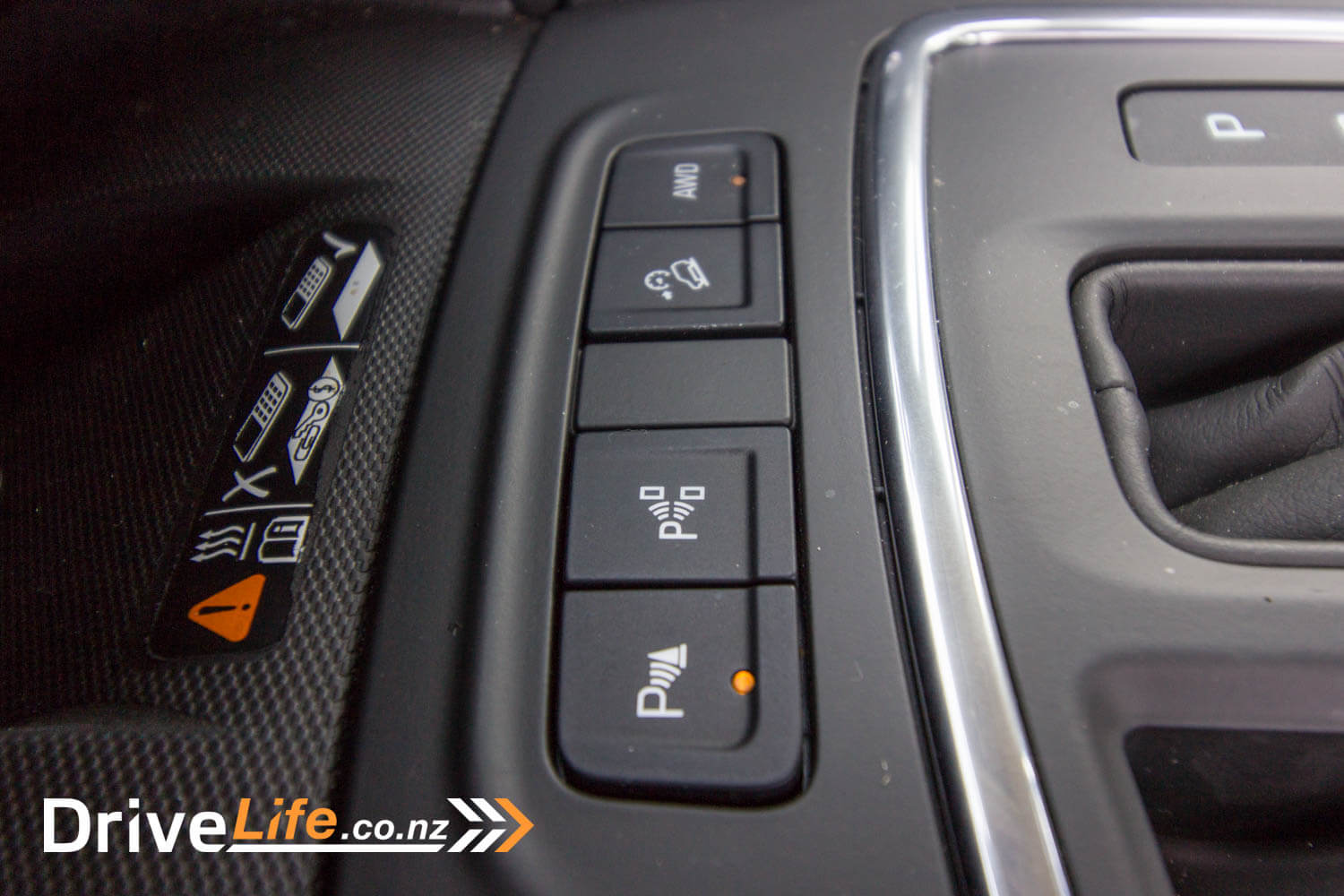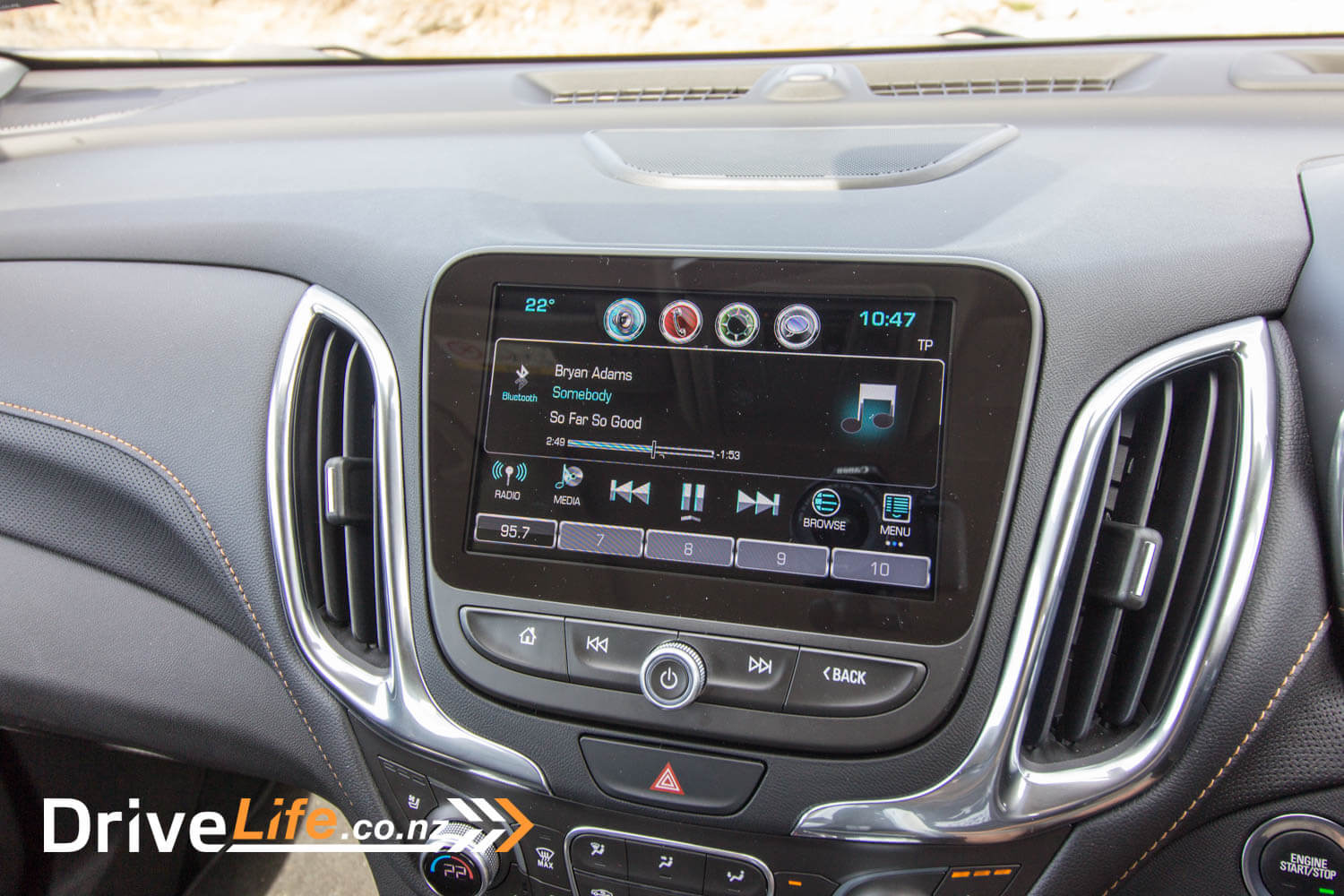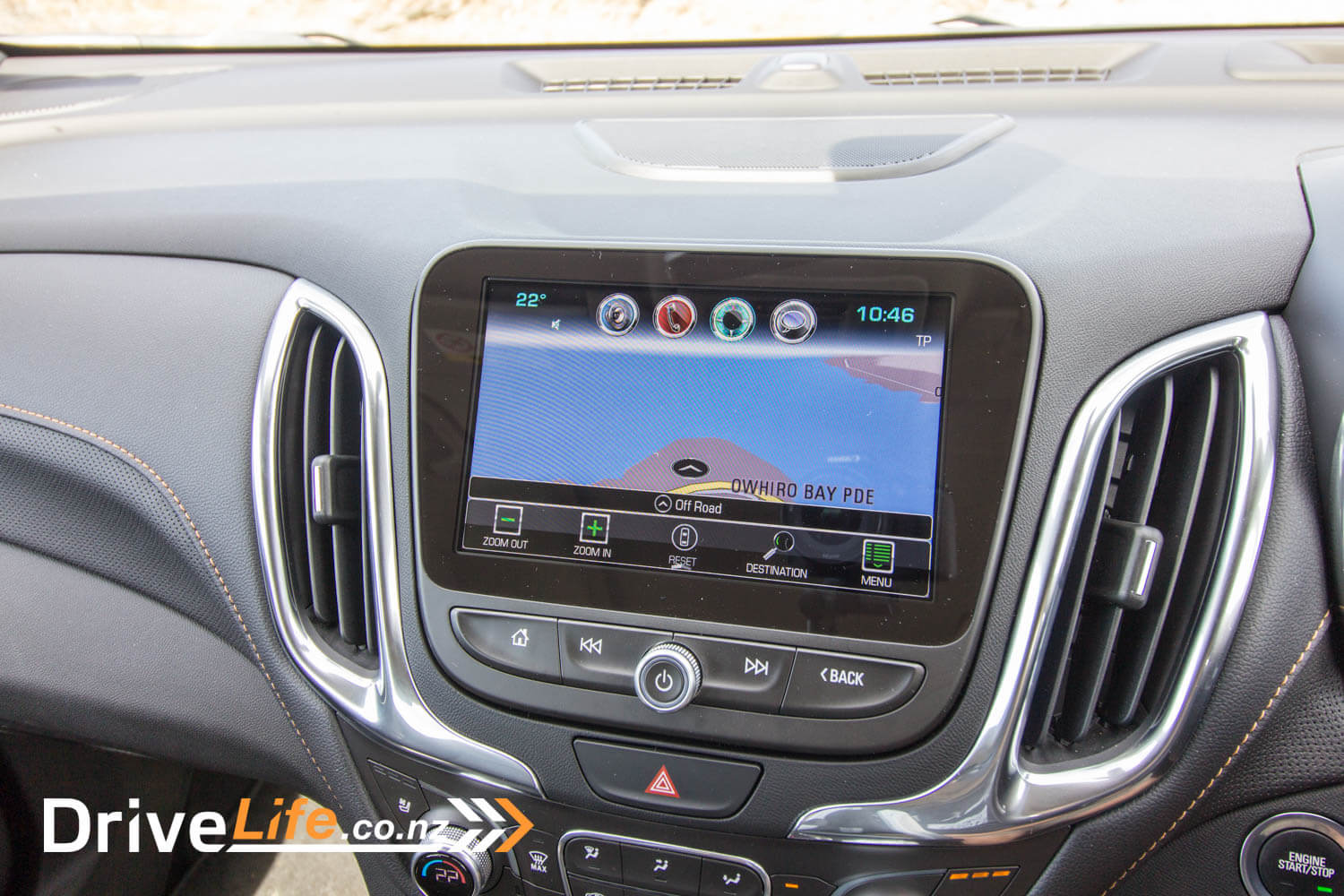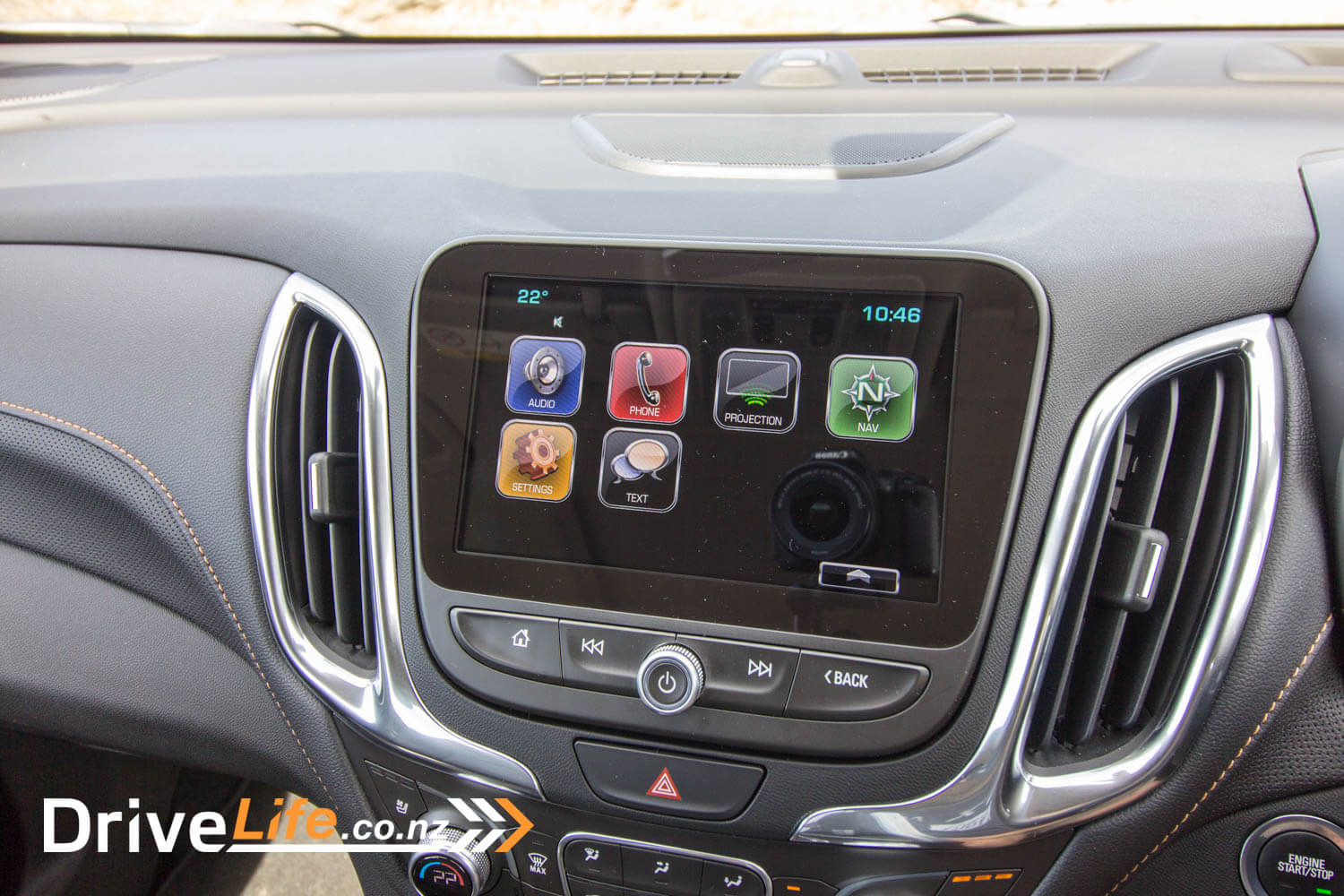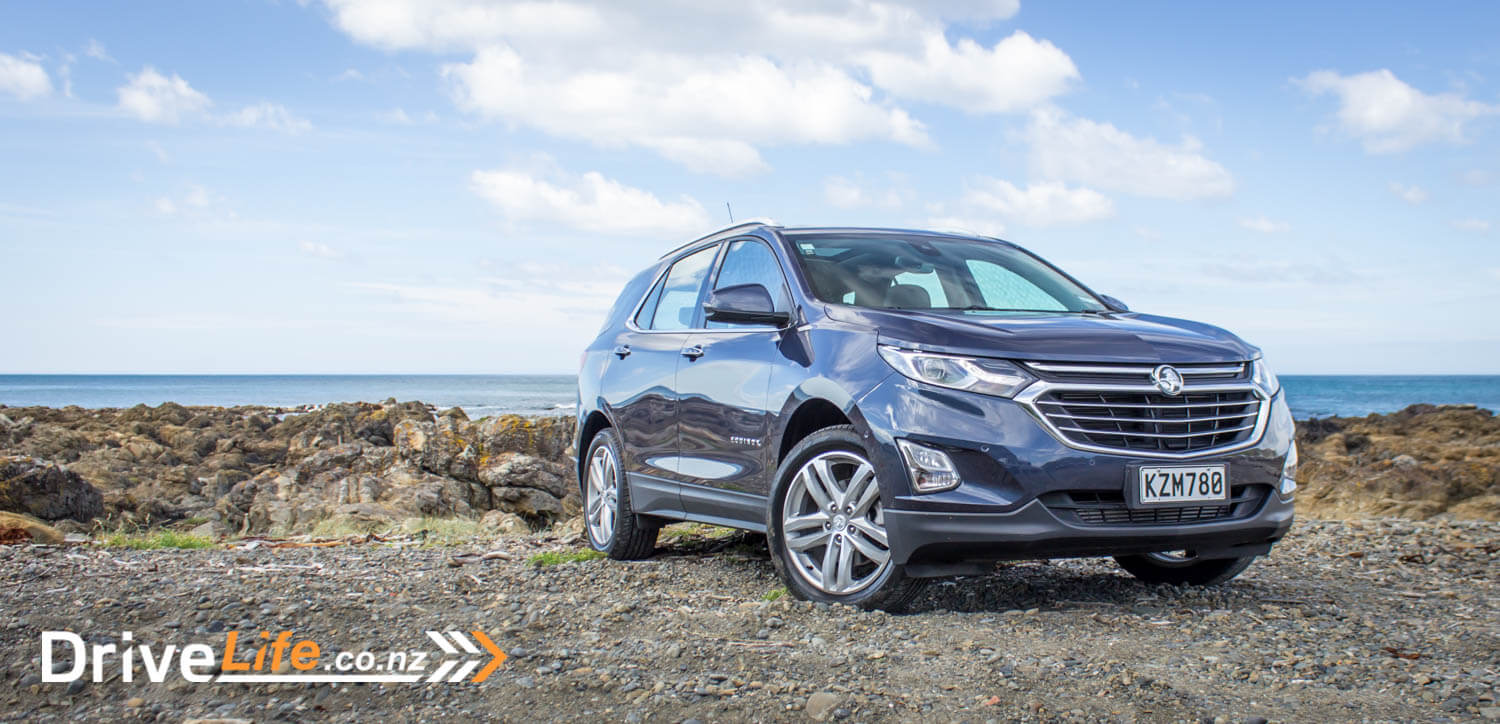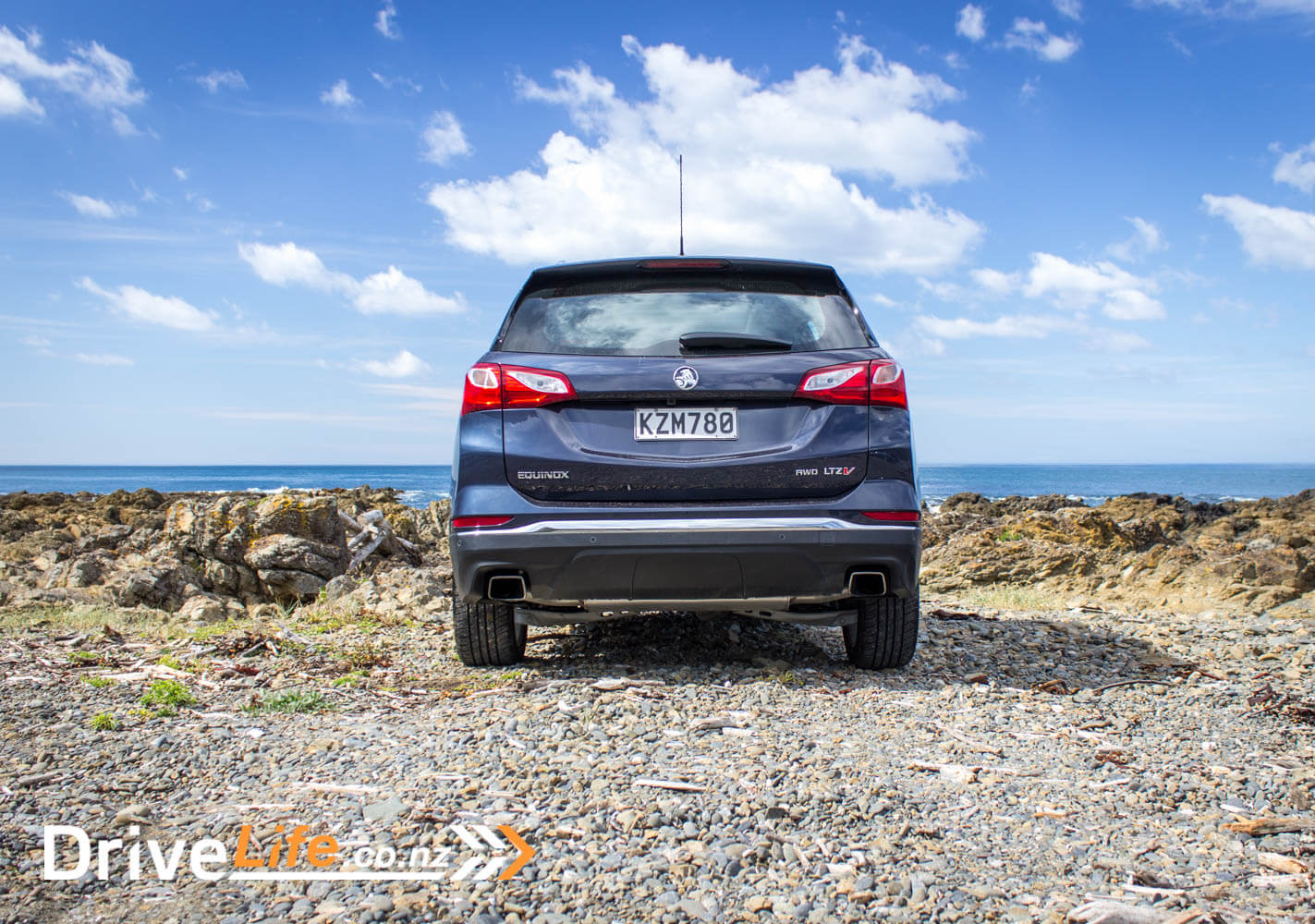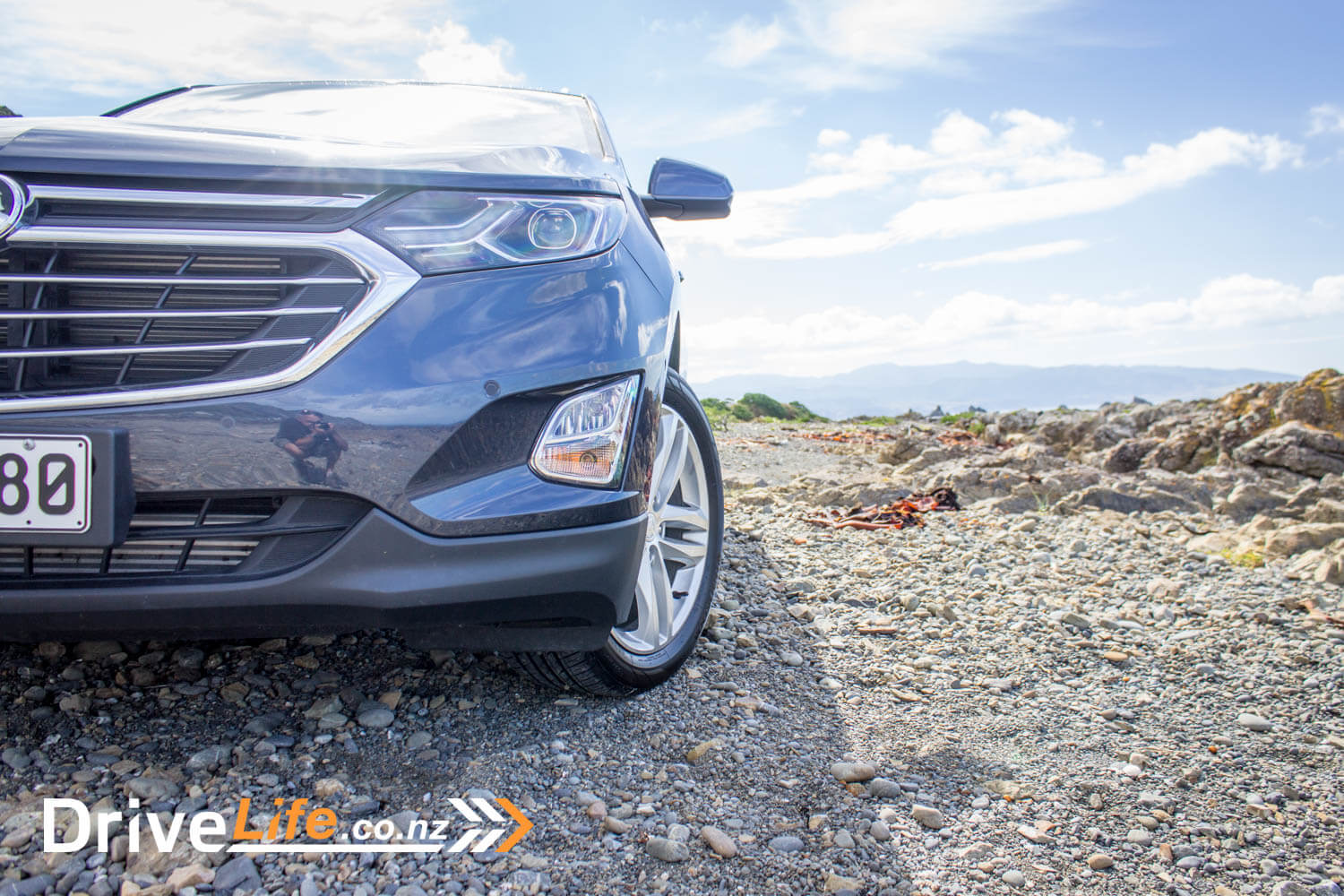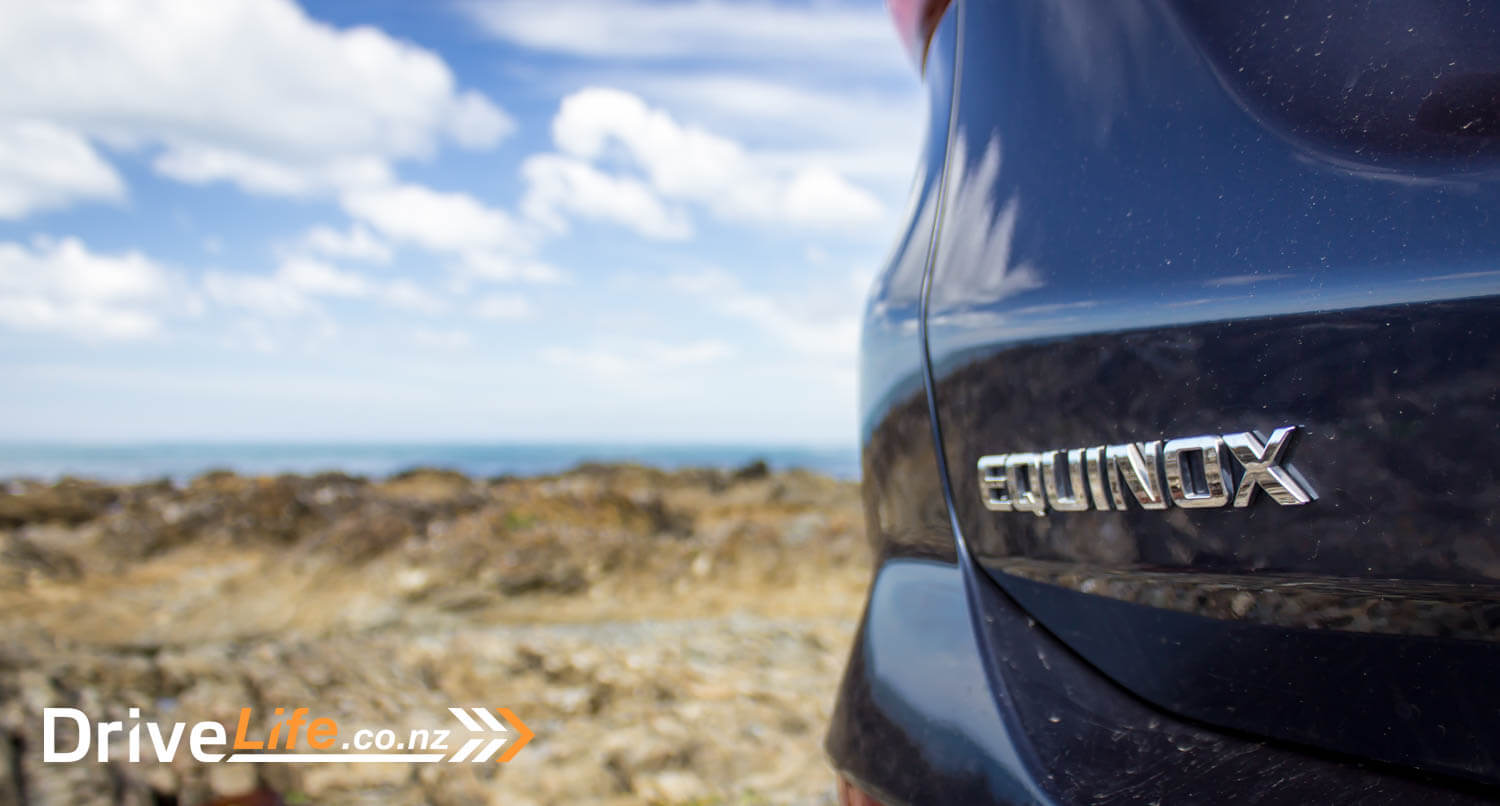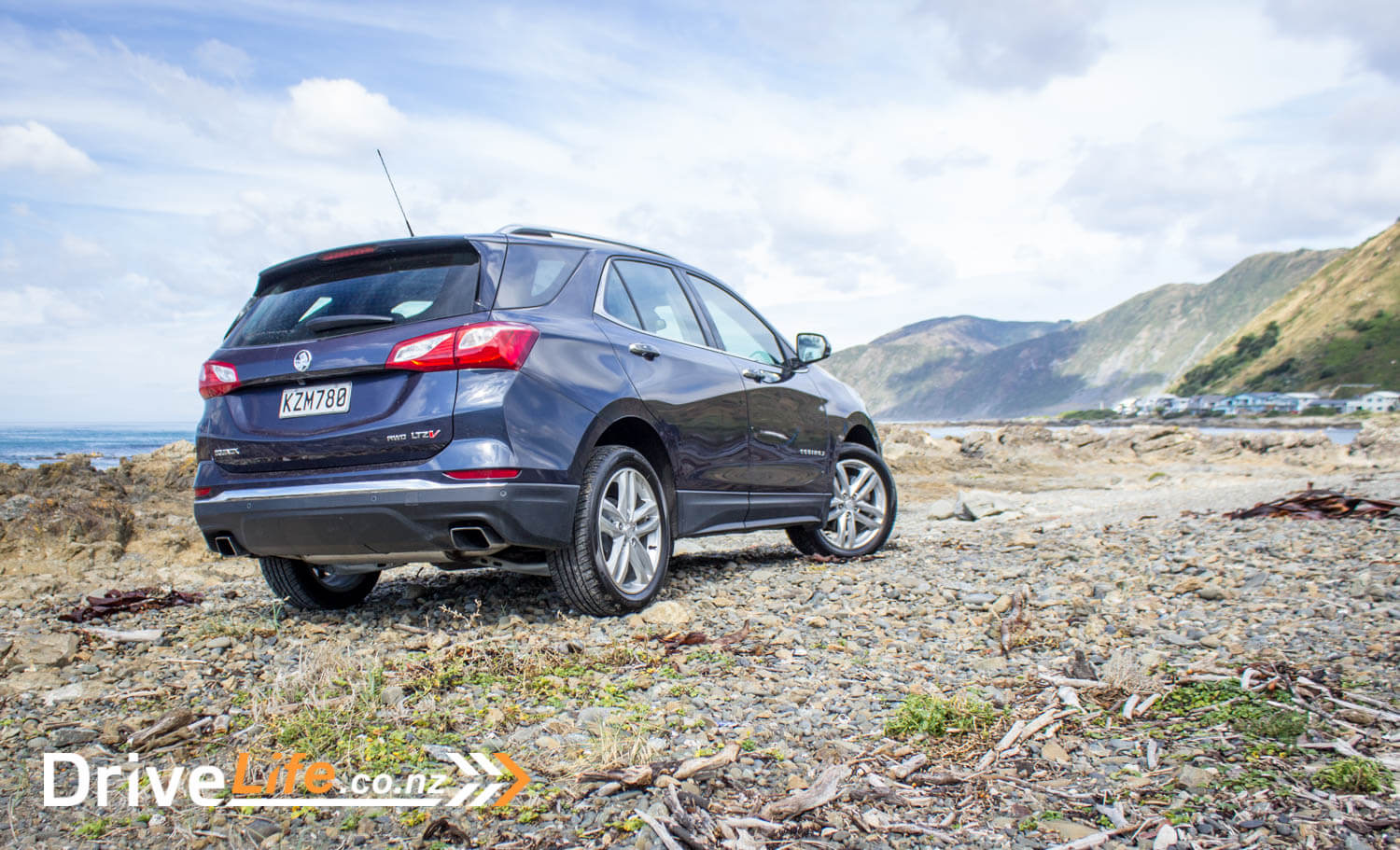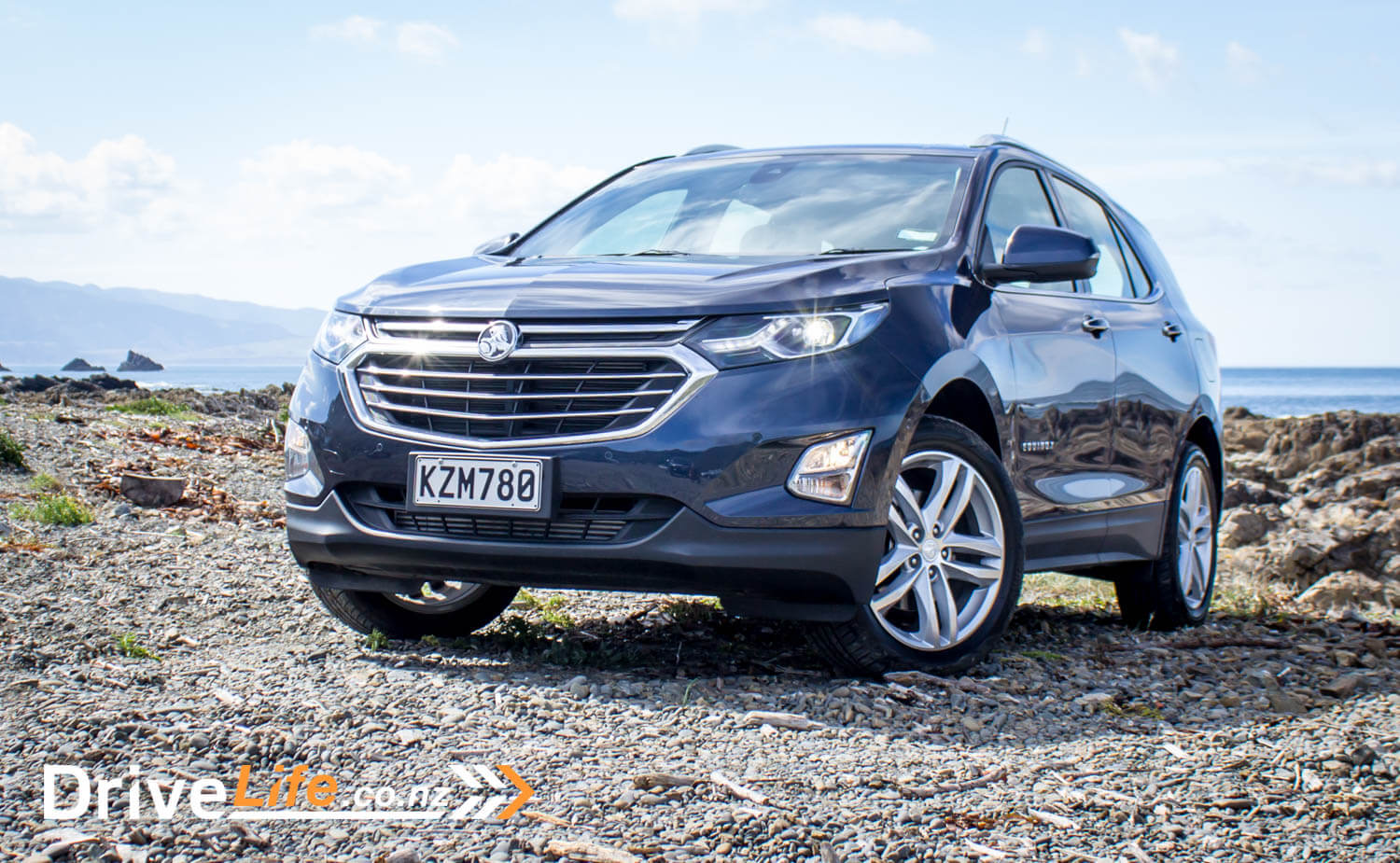While the new European-sourced Commodore grabbed the spotlight late last year, the all-new Equinox SUV snuck into town.
It’s the replacement for the long-running Captiva. Drive Life went to the launch of the car in New Plymouth, and we liked it – but that was only a day’s drive. We all know it takes a more than one day to really get to know a car enough to rate it.
While the Equinox is new to Holden, this is the third generation of the car that’s built in Mexico, but sold in the USA. Could this new mid-size SUV sourced from the USA take on the Japanese and Korean competition?
Holden sent us a top-spec Equinox LTZ-V to find out.
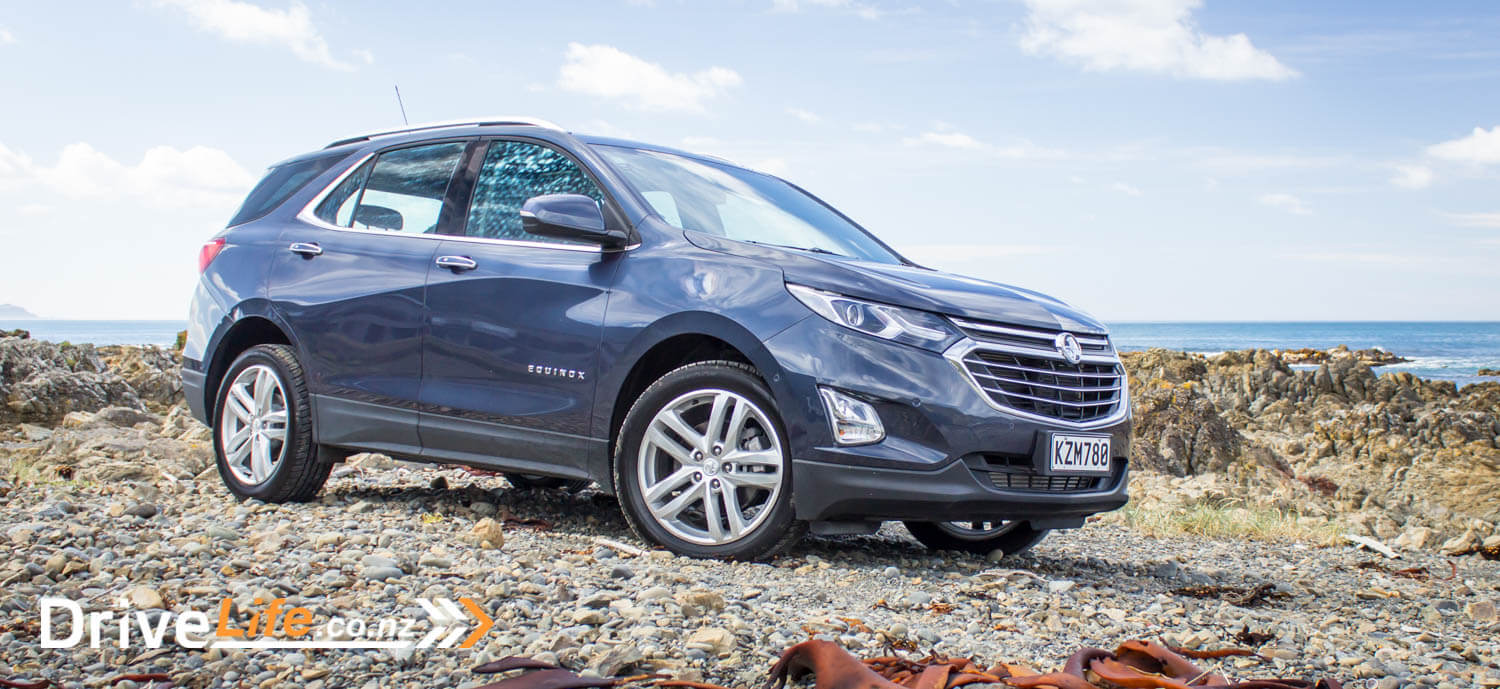
The Range
There’s something for everyone here, and the first surprise is the pricing; you can get the front wheel-drive (FWD) base LS model for $35,900, which for a mid-size SUV is pretty darn good value. Engine-wise, that’s a model with a 1.5-litre, 4-cylinder turbo petrol motor that puts out 127Kw or power and 225Nm of torque and is fitted with a 6-speed automatic transmission.
That’s not to say the base model is under equipped. The LS comes standard with keyless entry and start, rear park assist, LED DRLs, an electric park brake, 17” alloys, Android Auto and Apple CarPlay support, Active Aero Shutters, heated mirrors, active noise cancellation, a 7” colour touchscreen central display, cruise control, tilt/telescoping steering wheel, and a colour driver’s information display.
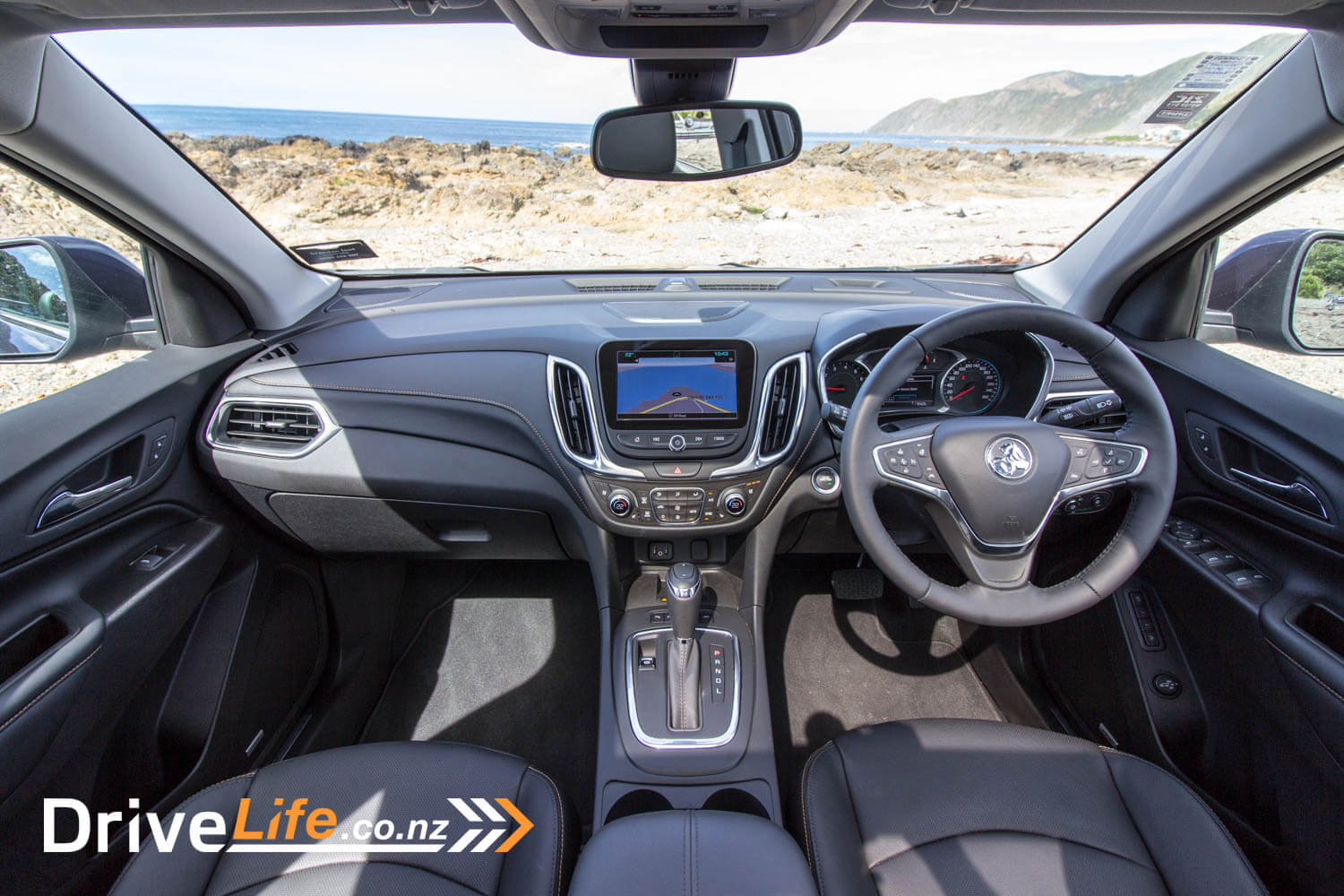
From the LS you move to the $39,990 LS+ with the same engine and transmission and still FWD. In fact there are no manual Equinoxes available. The LS+ and models above it are equipped with the unfortunately named Holden Eye. This means you now have Forward Collision Alert, Auto Emergency Braking, Lane Keep Assistant (HAPTIC Seat only), Lane Departure Warning, Rear Cross Traffic Alert, Blind Spot Alert and Follow Distance Indicator.
The LS+ also has a leather steering wheel, automatic wipers, automatic high beams, and heated/power folding mirrors.
After the LS+ comes the $43,990 (FWD) LT model that has the 2.0-litre, 4-cylinder twin-scroll turbo petrol engine. This puts out an extremely healthy 188kW of power and 353Nm of torque. The LT has a 9-speed automatic transmission and is where you can get a diesel option, at $46,990. It’s a 1.6 turbo-diesel that puts out 100kW of power and 320Nm of torque.
Compared to the petrol models, you’d really want to have a diesel when the petrol version has more power and torque. The diesel Equinox is fitted with a 6-speed automatic trans.
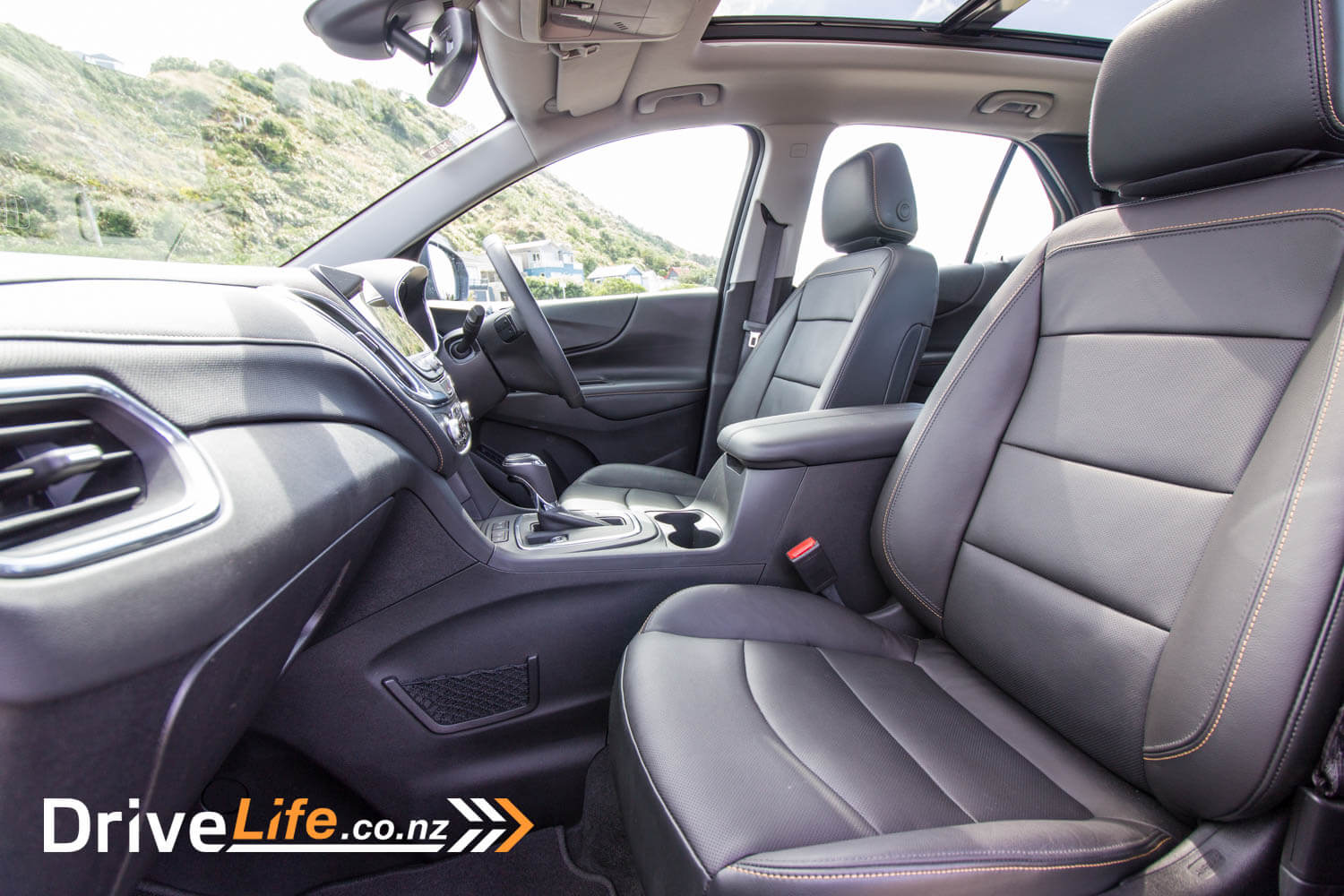
In terms of equipment, the LT models adds 18” alloys, front and rear park assist, High Intensity Discharge Headlamps with tunnel detection, an 8” touchscreen display, one touch folding rear seats, dual-zone digital climate control, heated front seats, compass display, Driver Information Centre with enhanced multi-colour display, remote engine start, MyLink Infotainment system with 8” colour touchscreen with embedded satellite navigation, and dual USB charge-ports for the rear seats.
The first AWD model of the range is the $52,990 (petrol and $55,990 (diesel) LTZ. Drivetrains are the same, but more goodies are fitted. These include Hill Descent Control, 19” alloys, Active Parking Assist, power tailgate, self-levelling LED headlamps, LED tail lamps, leather seating and trim, front and rear heated seats, electric driver’s seat with 2-way electric lumbar adjust, wireless phone charging and a 6-speaker Bose sound system.
Topping out the range is the LTZ-V, at $56,990 for the petrol and $59,990 for the diesel. The petrol LTZ-V is around $1k less than the top-spec Mazda CX-5, which Holden has in its sights. It’s the petrol LTZ-V which we are testing here.
Over the LTZ, the LTZ-V gives you a Haptic driver’s seat, front seat ventilation, dual sunroof, electric front seats with memory, heated leather steering wheel (with controls for audio, phone interface and Driver Information Centre).
There’s no 7-seat option for the Equinox (yet).
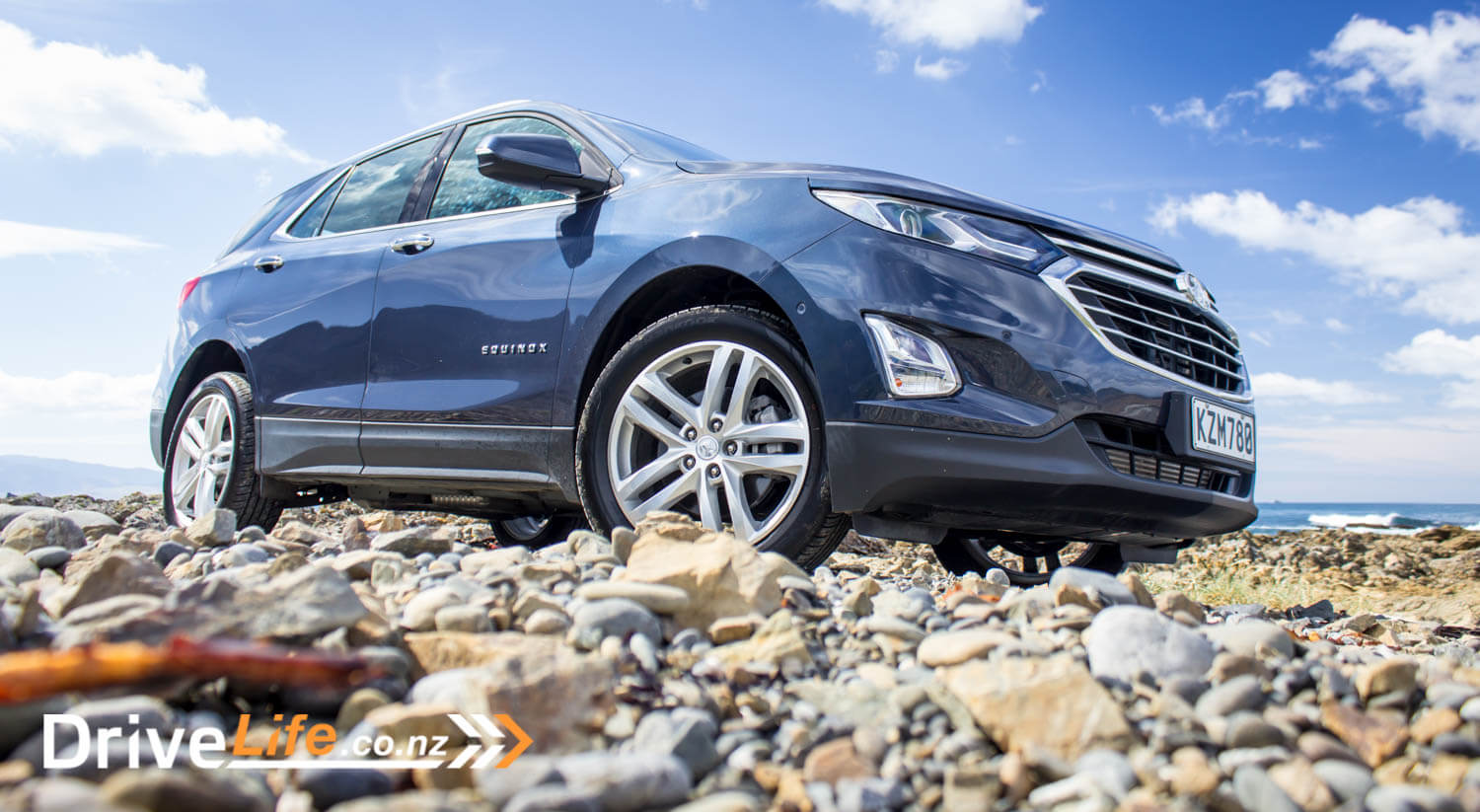
First Impressions
Although I had been to the launch of this car, it was good to get reacquainted with it. I have mixed feelings over the look. I like the front – it’s different to the Captiva, but still looks like a Holden, and is nicely proportioned.
Where I struggle is with the last quarter of the car. It’s a bit like the designers have started off making it an SUV, then at the rear went to lunch and let the car designers take over. It’s not bad, but it just doesn’t quite look like it belongs to the front of the car. The floating roof design looks good by itself, but to me the roof line drops too much, making it look like a station wagon has been grafted on at the back.
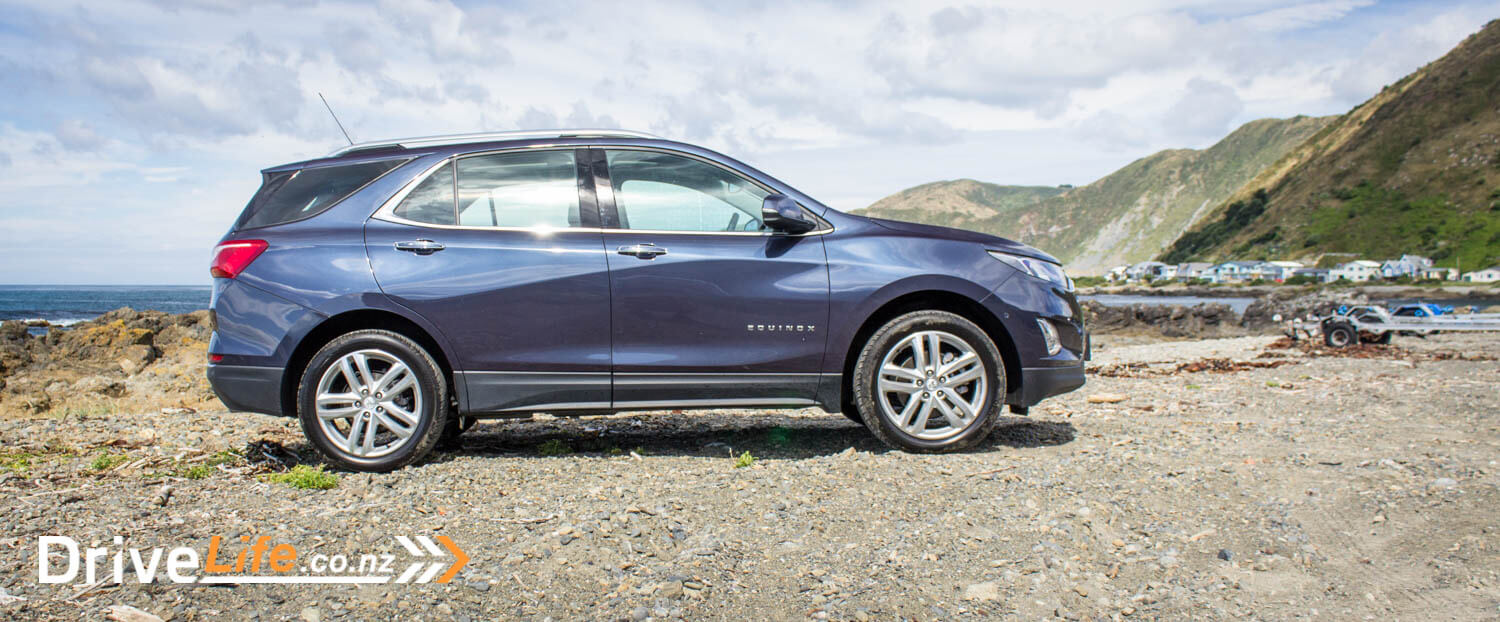
The Inside
Sometimes it’s nice to get the top-spec model. In fact, most manufacturers send us the top model to test – but often, I’d rather be testing the base model to see what the car is like, instead of being wooed by lots of goodies.
This time, I was wooed. The LTZ-V isn’t wanting for too much. It’d be nice to have a Heads-Up Display, but there’s not too much else I felt it was lacking.
The leather interior of the LTZ-V is pretty nice and feels like quality, and that panoramic sunroof lightens up the whole cabin. It’s fitted with an electric blind and a pop-up wind deflector too.
There’s some nice plastics used; still some hard plastics about the place but it’s a nice mix, and the contrasting stitching on the seats, console and doors adds a bit of class.
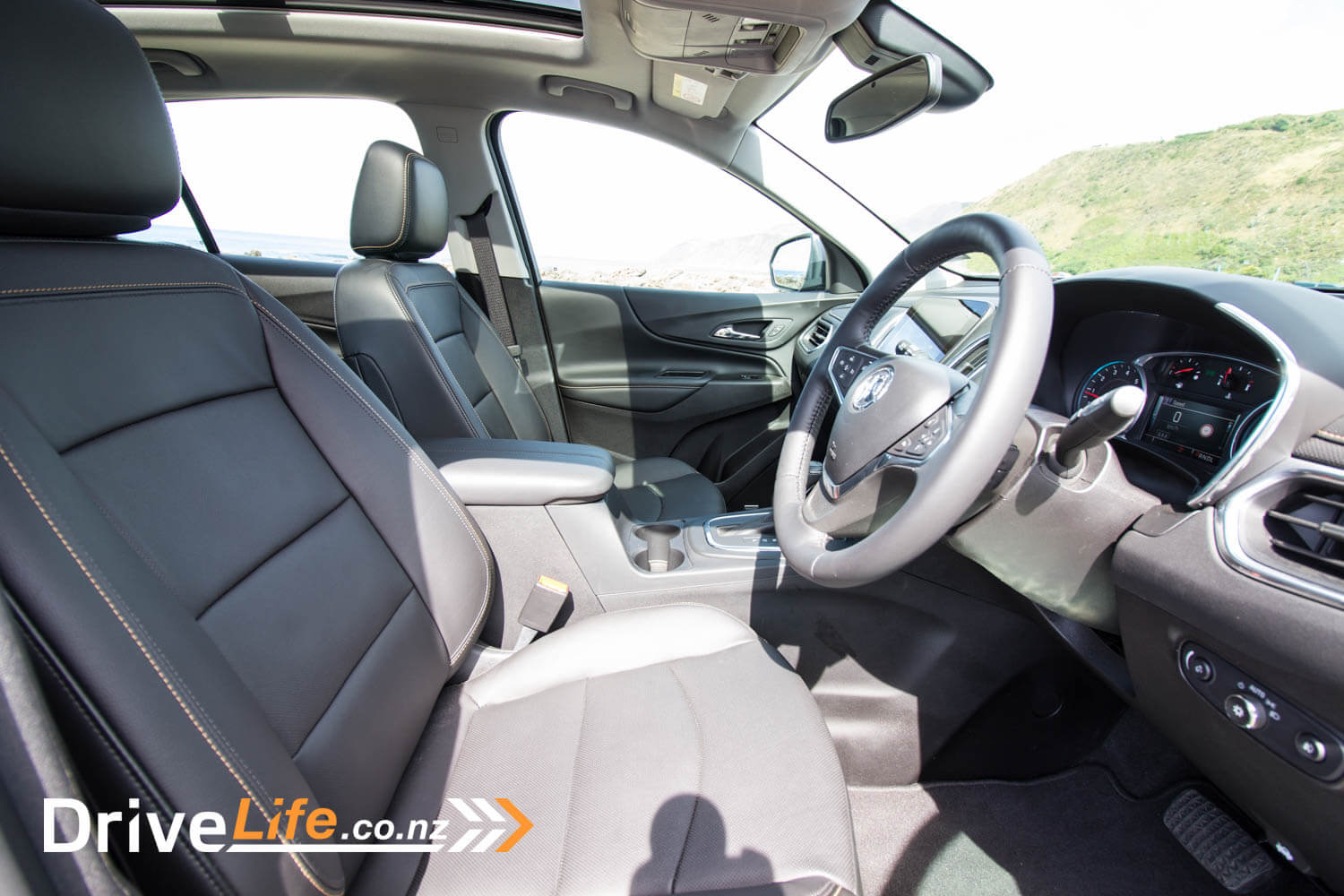
There’s cooled or heated seats, and you can set it to auto so that on warm (or cold) days, if you start the car with the remote the seats will turn on for you. It’s one of those First World problems resolved.
The central display leans back to give it an integrated look. This gives it a weird angle. It looks like you can tip it forward, but it doesn’t (I tried) but this would be a nice feature to have.
It’s a touchscreen display, and you can tap it, use the hold and drag functions as well as swiping and nudging functionality. Kids will feel right at home operating it.
The steering wheel is heated too, and I liked that this was turned on from a button right there on the steering wheel – no hunting for the controls for this on the central display, as happens in some other cars.
The back of the steering wheel carries the audio controls, and you get used to this very quickly, and wonder why others don’t do it. It frees up the front of the wheel for other controls. My Dodge has this as well, and it’s a great way to keep your hands on the wheel, rather than moving one to adjust the volume, on the front of the wheel.
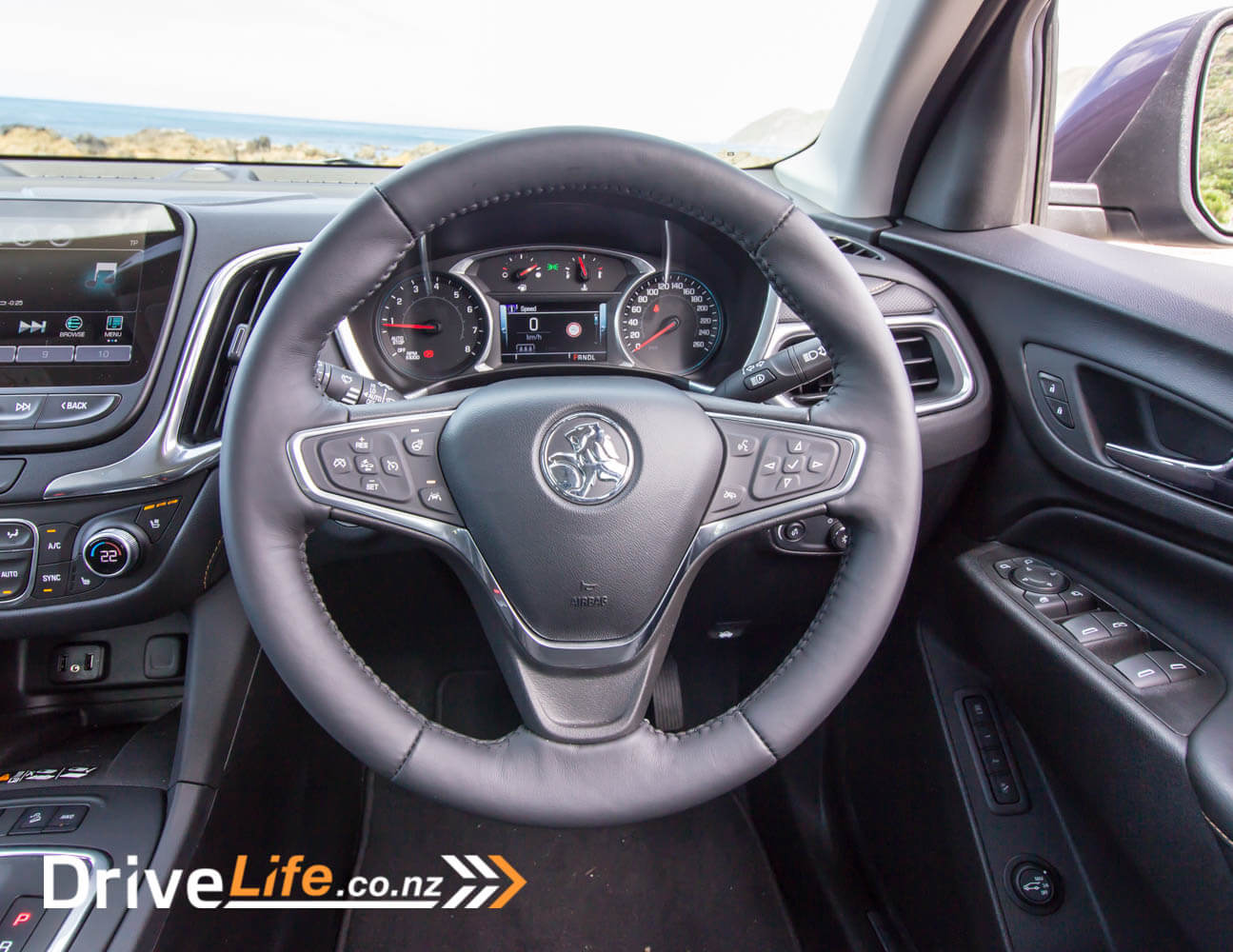
There’s a wireless charging spot right there in the centre console, and while my iPhone doesn’t do wireless charging, I’ve got a battery case for it that does. It was great to just stick it there while driving, and have my phone charge without mucking about with cables. Almost annoyingly, when you use the wireless charger, a warning message pops up on the central display, to let you know that. The PITA thing is that the message doesn’t go away after a timeout – you have to touch ‘OK’ to get rid of it.
In front of the driver is the DIC – the Driver Information Centre. This gives you info like fuel, trip, average speed, timer, maintenance, and a digital speed readout. It’s controlled very simply from the steering wheel controls.
The LTZ-V has the Bose sound system, just 6 speakers but it has great midrange and bass. The separation too was a surprise. When changing tracks or stations, you have three options; use the touchscreen display, the hard buttons below the display, or the steering wheel controls.
Top marks too for the quick reconnect on Bluetooth when you get back into the car. Also, the audio system doesn’t revert to radio – if you had it on Bluetooth when you left the car, it goes back to Bluetooth when you get back in. It feels like more and more cars are making it so when you get back in and start the car, the audio system reverts to radio and you have to manually select Bluetooth (for example). I was happy to see the Equinox wasn’t like that.
Naturally the top-range car has climate AC, and finally – finally! – I’ve found the car with the perfect controls. There are three buttons for the flow of air – feet, face or windscreen. And the thing is, you can pick which ones you want – any mix of them. Nearly every other car it’s either window and feet, or feet and face, or just one – you can’t tell other cars to give you windscreen and face for example. The Equinox wins points on this one for me.
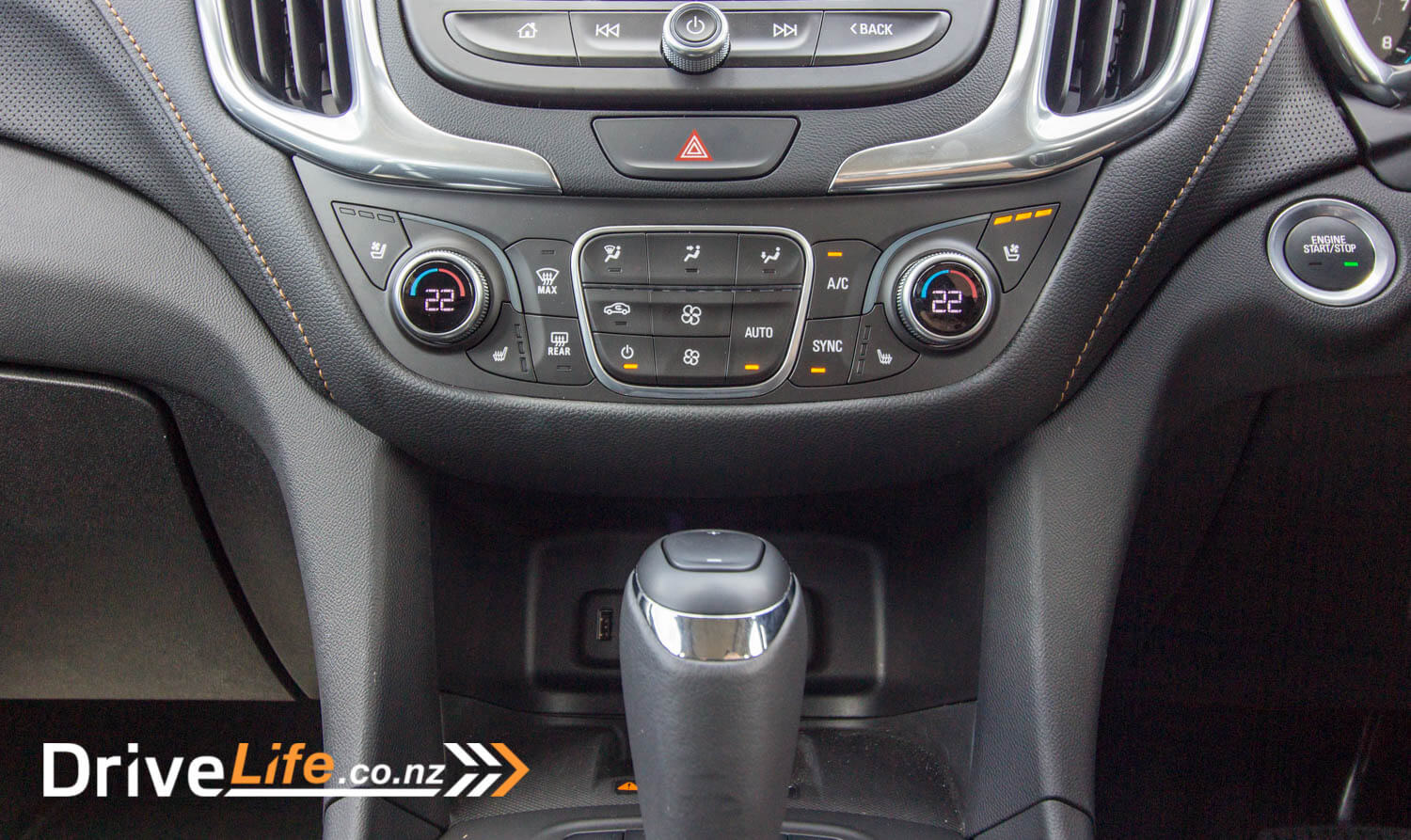
Funnily, the car has an auto up/down electric window for the driver, but the front passenger’s window is auto-down only.
The seats in the Equinox are firm but comfy. The cushion felt pretty short, even for me, but having electric lumbar adjust is always welcome.
Speaking of seats, when you turn the engine off, there’s a warning triggered by weight if you leave something on back seat. Handy feature!
In the rear of the LTZ-V, passengers are spoilt with 2xUSB ports, a 12volt socket and a 160-watt 230-volt power socket. We’re seeing more and more cars with 230-volt sockets in the rear, and it’s a great thing to have when you need it.
There’s good rear legroom, and boot space is an excellent 846 litres with the seats up, and a good 1798 with them down. This is almost double the space for some cars in our comparison chart. There’s a hands-free feature for the power tailgate too.
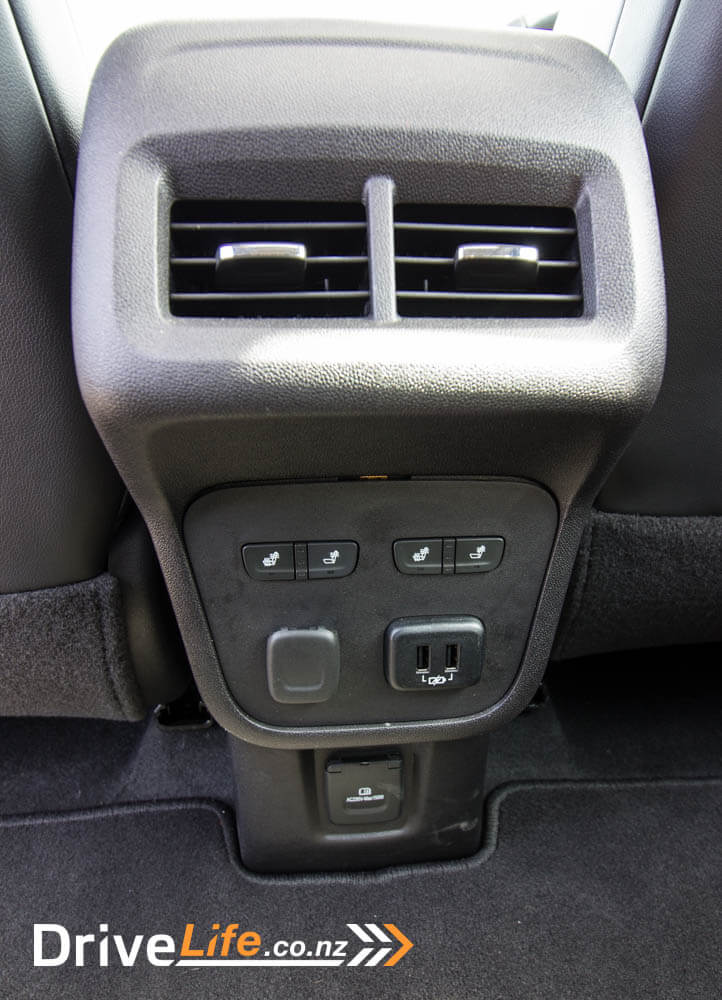
The Drive
Let’s get this out right now: the 2.0-litre Equinox is a blast to drive. Before I had picked our test car up, I had dropped off a Subaru WRX. To put the 2.0-litre Equinox into context, it has almost the same power than the WRX and has more torque.
It doesn’t take full throttle to spin the front wheels on this car. One night – admittedly it was wet – I went to pass someone. I was doing 68 km/h and floored it, and the front wheels started to wheel spin. It wasn’t dangerous or uncontrollable, but it was surprising. This car can really move.
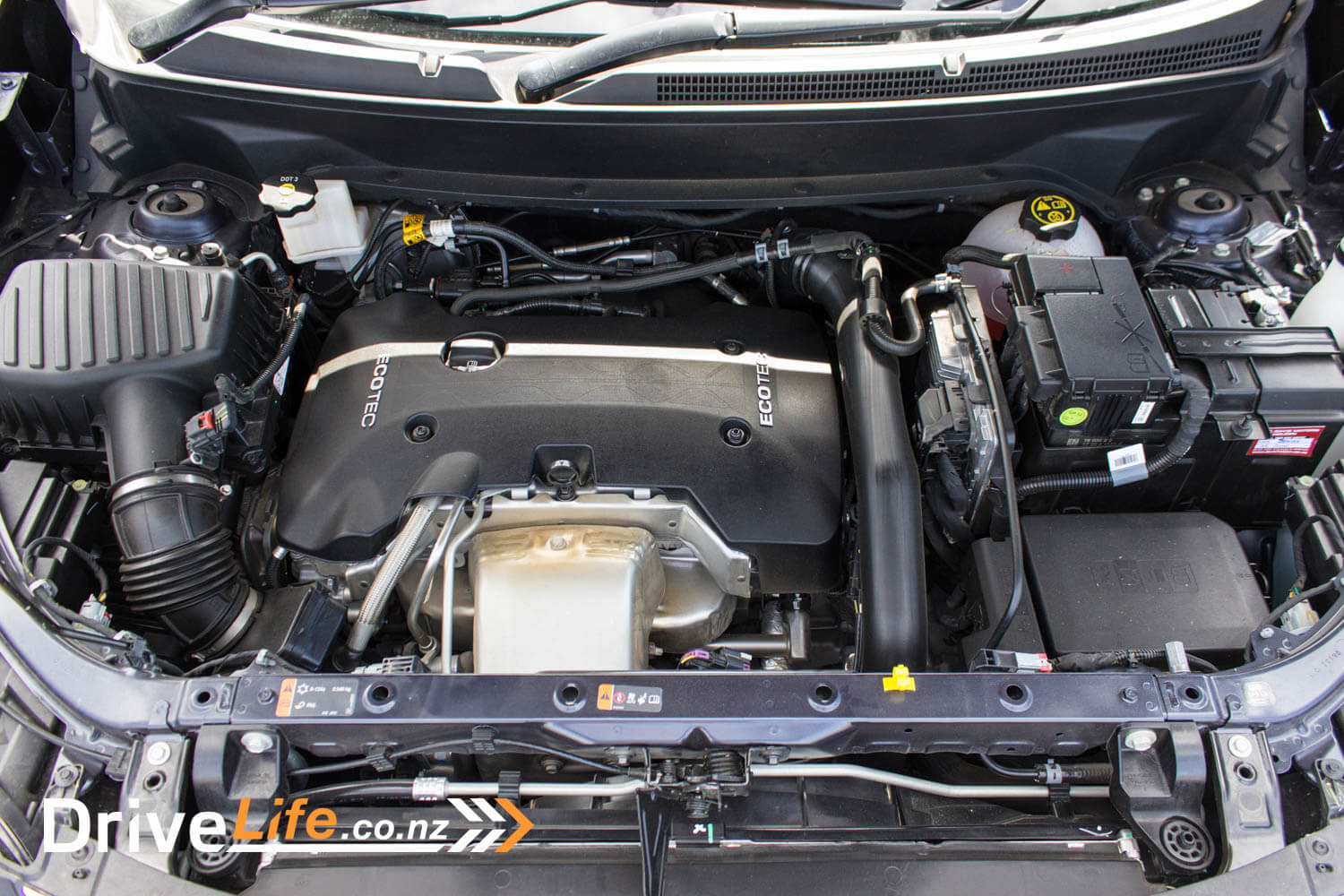
Torque from standstill is awesome, as is midrange power. A slight touch of the accelerator at any speed will see this car get up and go. It’s like driving a car in Sports Mode all the time. The Equinox doesn’t have any type of drive mode selector, but that’s what it feels like.
The engine even sounds a bit sporty, with a little raspy noises now and then. It’s not as refined as the CX-5 petrol, and you can feel a wobble now and then as it winds up. But it does have character, and it does sound good. In fact, it has far more character than the WRX – that engine doesn’t sound like anything at all.
That 9-speed auto is a real gem – right gear at the right time; you can’t ask for more than that. If you read the link on the launch of the Equinox, I mentioned that there’s no manual shifting or manual mode for this transmission – there are no paddles, and there’s no moving the lever to the left or right to control changes and give you some engine braking. Turns out I wasn’t quite right. To get the car into manual mode, you put it into Low and then use the +/- button on top of the shifter.
I cannot begin to explain how wrong it feels to shift the car into Low at 100km/h. I felt like I was going to break something. But no, shift it into Low, then use the button to shift up or down. The problem here is the button – while looking extremely cool – is on top of the shifter, and is at an awkward angle to use while driving, so I didn’t bother. Truth be known, with a 9-speed auto you have to shift down at least a couple of gears to get any engine braking.
So it goes – but what does it handle like, for an SUV? Pretty well. It proved itself on twisty roads during the launch, and I still feel it rides and corners better than it should. Body roll is well checked, and it’s a really competent handling car. The CX-5 would still see it off, but it’s very close. The suspension has been developed for the Australian and New Zealand markets, so it looks like this has paid off.
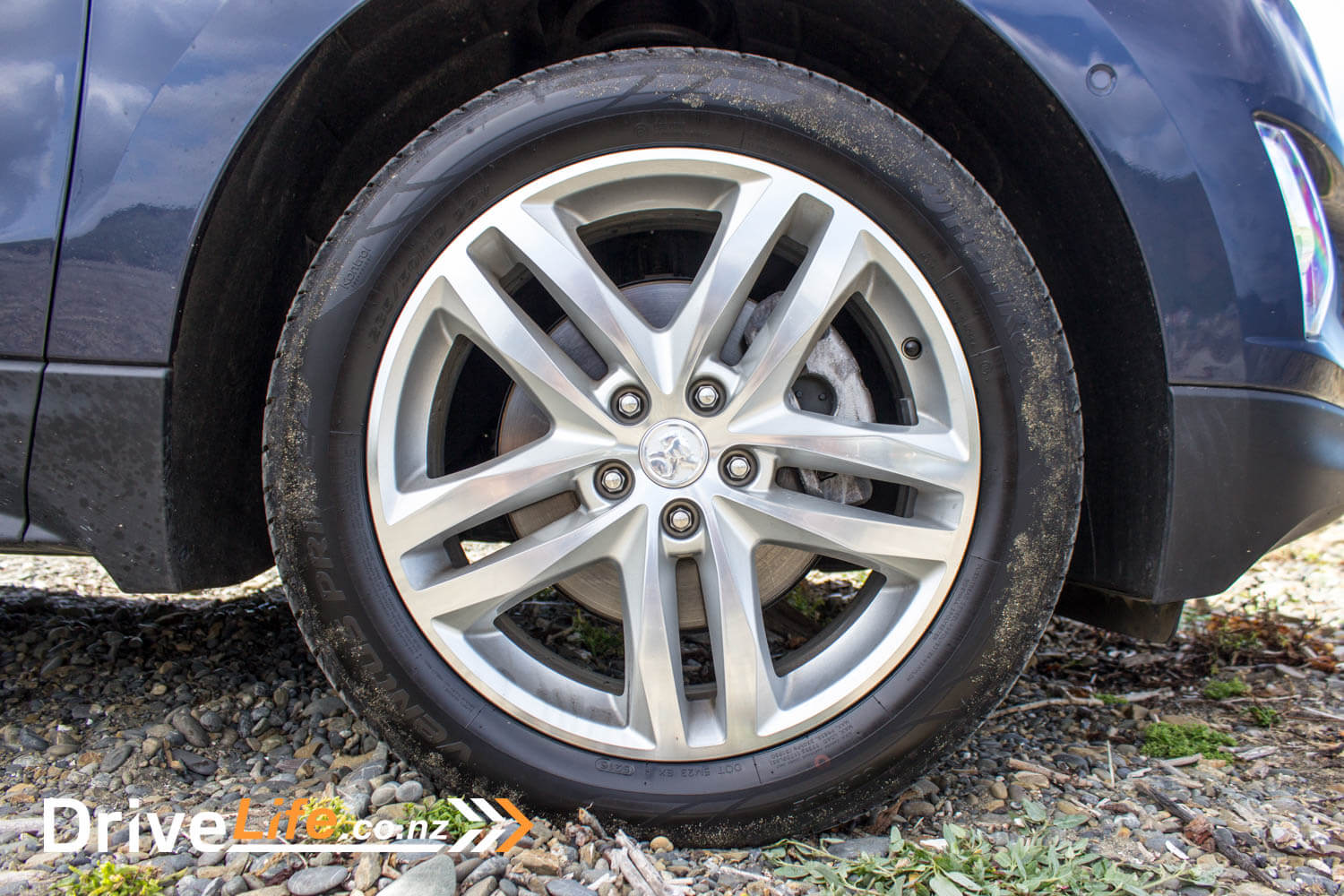
Braking too is excellent – great pedal feel and easily modulated. Speaking of brakes, the car doesn’t have any auto-hold, which is something we expect to see on all new models with an electric park brake.
The Equinox does have engine auto stop, but weirdly no button to disable this. I don’t mind this feature, but my wife hates it. She always turns it off. No such option on the Equinox, which is the first car I’ve seen where you can’t disable it.
The other thing with the engine auto stop – and most other manufacturers do this as well – is that when you stop at the lights, the engine stops. Just fine. But let’s say you are going to be a while, so you put the park brake on – and the engine starts again. It’s just so pointless. Some other cars that do this can be tricked by putting the transmission into Neutral first, but this makes no difference on the Equinox. The end result is that if you are going to be at the lights for a while, you either keep your foot on the brake pedal for ages with the engine off, or put the park brake on and have the engine running.
Wind noise and tyre roar is kept to minimum levels with the Equinox’s Active Noise Cancelling. It’s no CX-9 – that king of quietness – but it’s totally acceptable.
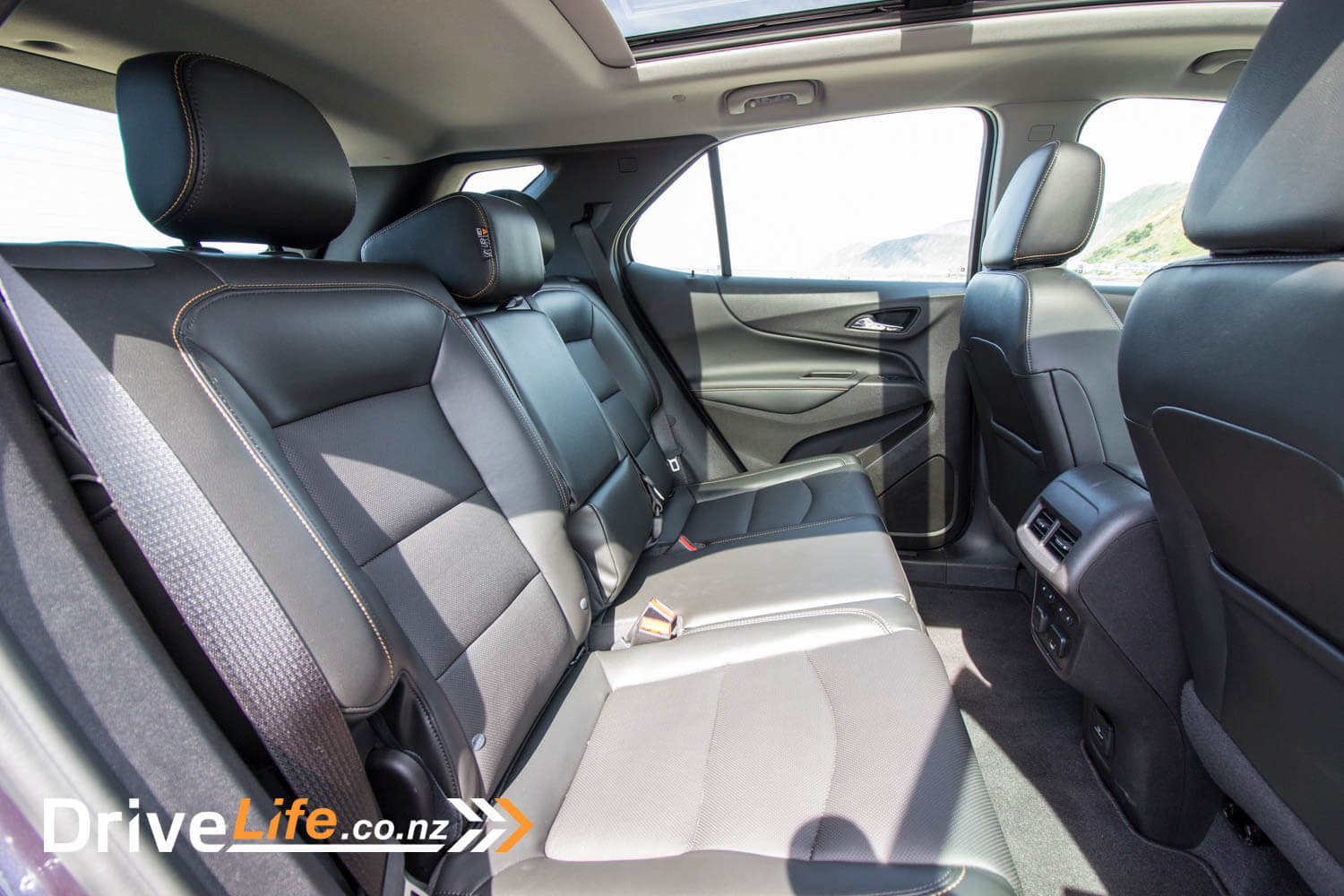
I mentioned the wireless charging warning that stays on if you put your phone on charge. Whenever you start the car, there’s another warning on the touchscreen that you must touch ‘OK’ on, otherwise it just stays there. Slightly annoying and I expect it’s a carryover from the King Country of warnings, the USA. In other cars, the warning just disappears by itself after 30 seconds or so.
You get a Haptic seat in the LTZ-V. This means if you get too close to the car in front, or reverse too close to something – or a car etc comes up on either side of the car while reversing, the driver’s seat will vibrate. It started off as an enjoyable gimmick, but I did learn to like it. It’s directional too, so if you are backing out (for example) of a tight spot and there’s a car approaching on your left, the left side of the cushion will vibrate. Hopefully we’ll see more of this feature in future.
A following distance indicator is included with the Holden Eye safety system, so that you can be warned if you are too close to the car in front. A great idea, but the execution is a little lacking.
The warning is a small car icon at the bottom of the dashboard, which goes from green to yellow if you are too close. There’s no flashing and since there’s no HUD, you have to be really observant to notice it. A bit of a shame as this is a great feature for learner drivers. Actually, there’s some seasoned drivers out there who could learn from this too.
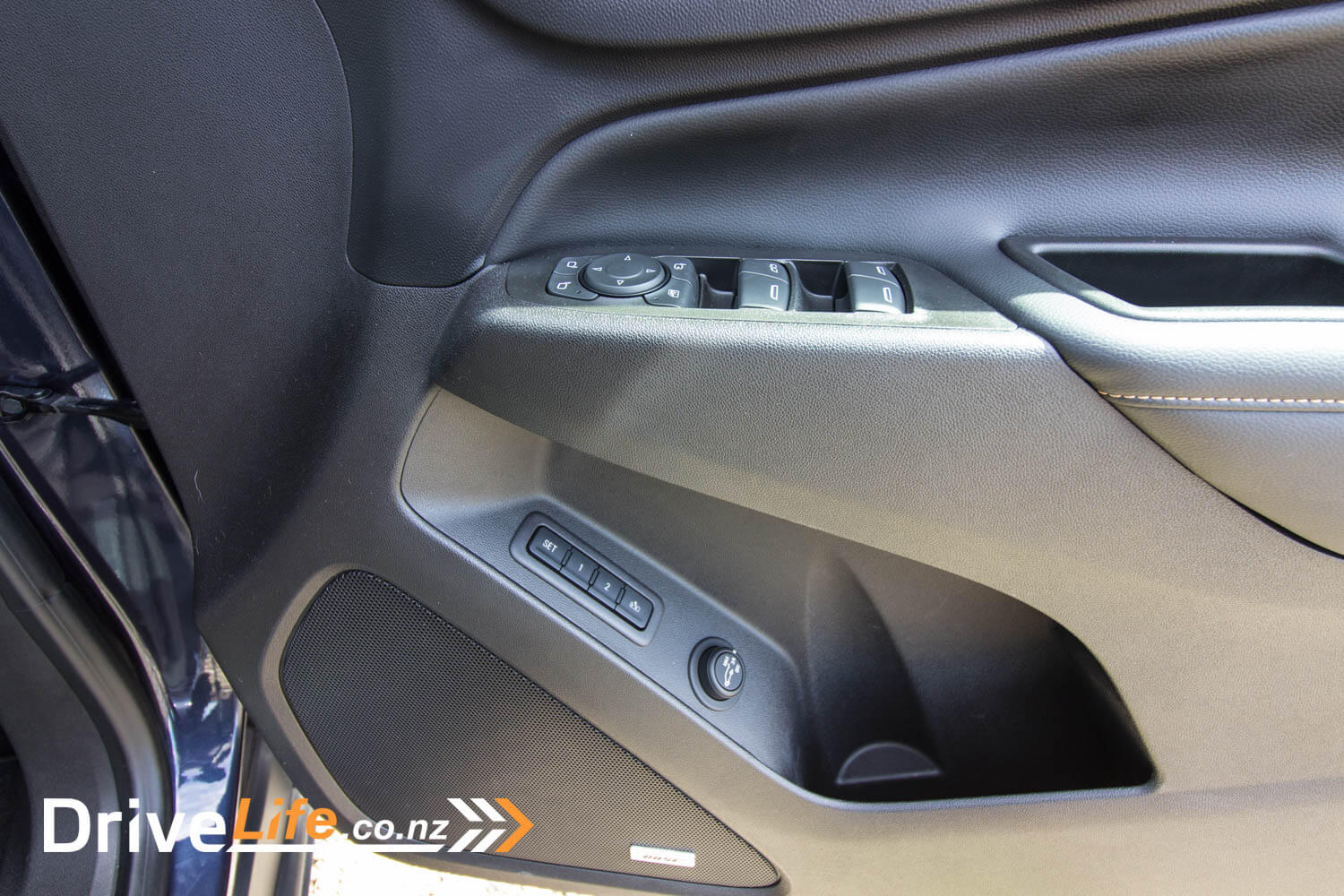
There was a bigger surprise than the performance of the Equinox: it doesn’t have adaptive cruise control. Yes, this top of the line model makes do with old-school cruise control. I thought I was missing something here to start with, but after checking the specs, adaptive cruise is not a feature. Weird and almost unbelievable.
It does have automatic parking though, as well as moving guidelines for the reversing camera, so that’s two pluses right there. Another bonus for reversing or parking is the super-tight turning circle. At just 6.3m this is on the low end of the scale.
SatNav is included in this model, and it works perfectly, as it should. A shame though that you can’t have your directions and the digital speed readout at the same time on the Driver’s Information Centre. There’s some handy info there, but being able to have both speed and directions at the same time is perfect.
So, Active Aero Shutters…what the hell are they? The Equinox has electronically controlled upper and lower grille shutters to assist with aerodynamics. So there you go. You have no idea anything is happening, just sit back and let them do their thing.
We’re seeing a lot more SUVs now with high-power, small capacity turbo petrol motors. Some use more fuel than you think they would, or should. Over 500km in the Equinox with a solid 50/50 mix of town and motorway, I averaged 9.7l/100km. Holden suggests a combined rating of 8.4. In comparison, I averaged 8.9 in the 1.4-litre Kodiaq, and 8.8 in the 2.5-litre Mazda CX-5.
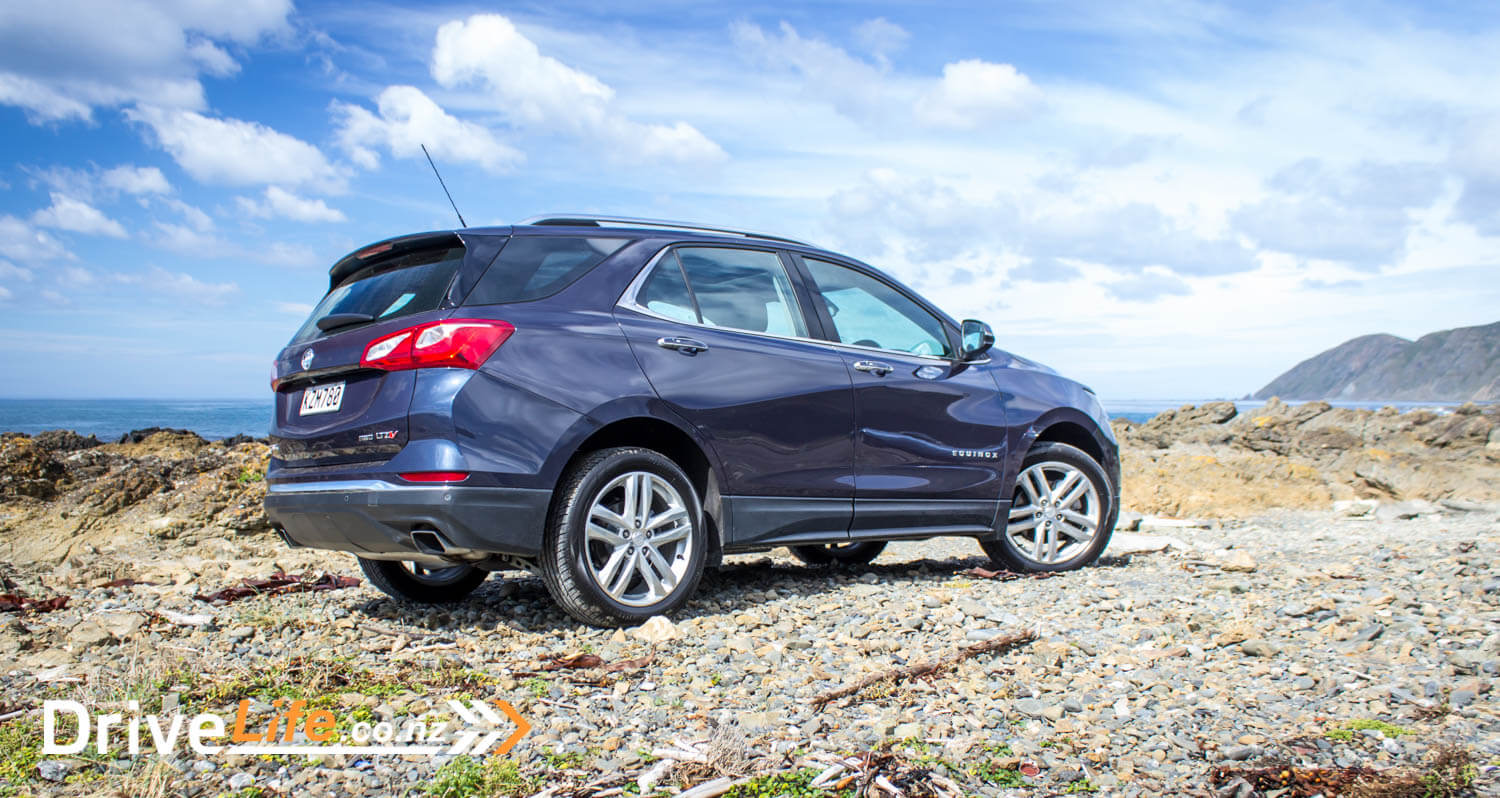
The Competition
Well done Holden – the Equinox wins both the power and torque race in our comparison chart.
| Brand/Model | Engine | Power/Torque | Fuel, L/100km | Seats | Boot space, litres | Towing capacity, Kg | Price – High to Low |
| Volkswagen Tiguan TSI R-Line AWD | 2.0-litre, 4-cylinder, turbocharged petrol | 132Kw/320Nm | 7.8 | 5 | 615 | n/a | $66,690 |
| Hyundai Santa Fe Elite Limited AWD | 1.6-litre, 4-cylinder, turbocharged petrol | 130Kw/265Nm | 7.7 | 5 | 516 | 750 | $59,990 |
| Toyota RAV4 Limited AWD | 2.5-litre, 4-cylinder, petrol | 132Kw/233Nm | 8.5 | 5 | 577 | 750 | $59.690 |
| Holden Equinox LTZV AWD | 2.0-litre, 4-cylinder, turbocharged petrol | 188Kw/353Nm | 8.4 | 5 | 846 | 750 | $56,990 |
| Mazda CX-5 Limited AWD | 2.5-litre, 4-cylinder, petrol | 140Kw/251Nm | 7.5 | 5 | 455 | 750 | $55,495 |
| Mitsubishi Outlander VRX AWD | 2.4-litre, 4-cylinder, petrol | 126Kw/224Nm | 7.2 | 7 | n/a | 750 | $54,990 |
| Skoda Kodiaq TSI Style AWD | 2.0-litre, 4-cylinder, turbocharged petrol | 132Kw/320Nm | 7.4 | 7 | 630 (3rd row up) | n/a | $54,290 |
| Ford Escape Titanium EcoBoost AWD | 2.0-litre, 4-cylinder, turbocharged petrol | 178Kw/345Nm | 8.6 | 5 | 406 | 750 | $53,490 |
| Nissan X-Trail Ti AWD | 2.5-litre, 4-cylinder petrol | 126Kw/226Nm | 8.3 | 5 | 565 | n/a | $53,490 |
| Kia Sportage GT Line AWD | 2.4-litre, 4-cylinder petrol | 135Kw/237Nm | 8.5 | 5 | 466 | 750 | $51,990 |
| Honda CRV Sport Sensing AWD | 1.5-litre, 4-cylinder, turbocharged petrol | 140Kw/240Nm | 7.4 | 5 | 522 | 1,500 (braked) | $47,900 |
The Pros and Cons
| Pros | Cons |
|
|
What do we think of it?
I enjoyed my week with the LTZ-V. Most of that was down to that motor – awesome. Some of it was also down to being given the top-spec model, and all that comes with that. I love the haptic seat, and not just because it vibrates your ass. It’s a great safety feature.
Not having adaptive cruise control is almost unforgivable in a $57,000 car in 2018. Hell, even the $24K Suzuki Swift GLX has adaptive cruise.
It is a great handling and riding car, and practical to boot – but then so is the CX-5. Does it differentiate itself from its main competition? Yes and no. The CX-5 is so refined, and handles better than it should. The Equinox is fun to drive for different reasons. Then again the CX-5 looks stunning.
If I had to pick, I’d be torn. I think it’d come down to brand preference, or simply which one looks better to you.
Either way, I doubt a buyer would be unhappy. The Equinox is a worthy drive, and far better than the Captiva it replaces.

4.0 chevrons
2017 Holden Equinox LTZ-V
| Vehicle Type | Midsize AWD 5-door SUV |
| Starting Price | $35,990 |
| Price as Tested | $56,990 |
| Engine | 2.0-litre, 4-cylinder DOHC turbocharged petrol |
| Power, Torque | 188Kw/353Nm |
| Transmission | 9-speed automatic |
| 0-100km/h, seconds | Low sevens |
| Spare Wheel | Space saver |
| Kerb Weight, Kg | 1,695 |
| Length x Width x Height, mm | 4652x1843x1697 |
| Cargo Capacity, litres | 846/1798 |
| Fuel capacity, litres | 55 |
| Fuel Efficiency | Advertised Spec – Combined – 8.4L / 100km
Real World Test – Combined – 9.7L / 100km Low Usage: 0-6 / Medium Usage 6-12 / High Usage 12+ |
| Towing Capacity | 750kg unbraked
2,000kg braked |
| Turning circle, metres | 6.3
Small: 6-10m / Medium 10-12m / Large 12m+ |
| Warranty | 3 years, 100,000km
3 years free scheduled servicing |
| ANCAP Safety Ratings | 5 Star |
